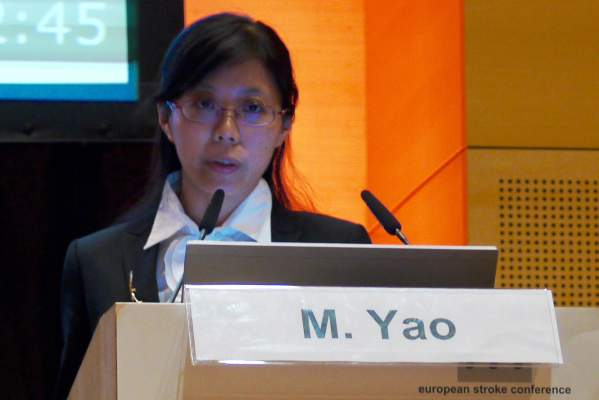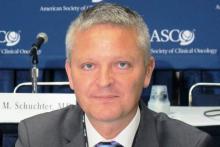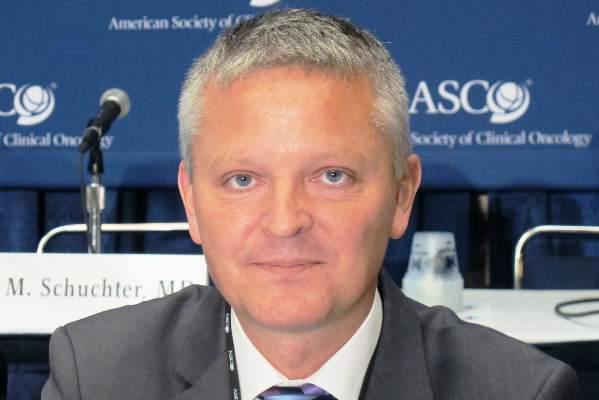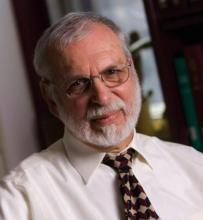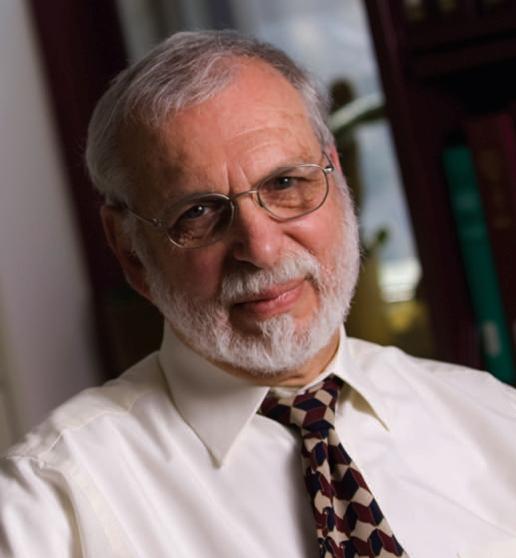User login
Society of Hospital Medicine Learning Portal Adds Programs
Free CME is available to all SHM members, and new modules are added all the time. Here’s a sampling of the most recent online modules:
- Observation or Inpatient? Challenges and Successes in Implementing the Two-Midnight Rule.
- Primer for Hospitalists on Skilled Nursing Facilities: SHM’s first educational initiative, directed at a rapidly growing segment of work for hospitalists, post-acute care (PAC).
- Organizational Knowledge and Leadership Skills 2015.
- Patient Safety Principles 2015.
- Quality Measurement and Stakeholder Interest 2015.
Free CME is available to all SHM members, and new modules are added all the time. Here’s a sampling of the most recent online modules:
- Observation or Inpatient? Challenges and Successes in Implementing the Two-Midnight Rule.
- Primer for Hospitalists on Skilled Nursing Facilities: SHM’s first educational initiative, directed at a rapidly growing segment of work for hospitalists, post-acute care (PAC).
- Organizational Knowledge and Leadership Skills 2015.
- Patient Safety Principles 2015.
- Quality Measurement and Stakeholder Interest 2015.
Free CME is available to all SHM members, and new modules are added all the time. Here’s a sampling of the most recent online modules:
- Observation or Inpatient? Challenges and Successes in Implementing the Two-Midnight Rule.
- Primer for Hospitalists on Skilled Nursing Facilities: SHM’s first educational initiative, directed at a rapidly growing segment of work for hospitalists, post-acute care (PAC).
- Organizational Knowledge and Leadership Skills 2015.
- Patient Safety Principles 2015.
- Quality Measurement and Stakeholder Interest 2015.
Veteran's Affairs Education Programs Develop Hospitalist Leaders
The Veterans Health Administration (VHA) is entrusted with three key missions: clinical care, research, and education. Although clinical care and research receive much of the publicity, the role that the VHA plays in education remains critically important to both current and future healthcare providers.
As one of the statutory requirements of the Department of Veterans Affairs (VA), the VHA runs multiple training programs, encompassing many types of healthcare providers, under the aegis of the Office of Academic Affiliations (OAA). Started after World War II, OAA was founded on the premise of joining each VA hospital with a medical school. For more than 60 years, these agreements have grown and flourished, and VHA facilities currently have affiliation agreements with 130 of the 141 accredited allopathic and 22 of the 29 accredited osteopathic medical schools in the United States. In partnership with these academic institutions, VHA trained more than 40,000 graduate medical learners (residents and fellows) and more than 21,000 medical students in 2013 alone. This makes VHA the nation’s single largest provider of medical education. Currently, more than 65% of all U.S. physicians have completed some portion of their training in a VHA setting.
A core piece of the VHA, OAA continues to innovate as it grows. For example, as the country moves toward patient-centered medical homes, VHA has developed its own version: patient aligned care teams (PACTs). Accordingly, OAA has been overseeing the development of “Academic” PACTs to better understand how to incorporate trainees into these new systems of care.
Along the same lines, there are three post-graduate training programs of particular interest to hospitalists: the Chief Resident in Quality and Patient Safety (CRQS) program, the Patient Safety Fellowship Program, and the VA National Quality Scholars Fellowship Program (NQSFP). All of these have rigorous educational components that are coordinated through the National Center for Patient Safety.
The CRQS program was developed to support additional chief residents who would be dedicated to educating housestaff and students about quality improvement and patient safety. As of July 1, 2015, there will be 58 such chief residents at VAs across the country. These positions are open to any residency that has at least eight other VA-funded resident positions in the program. Currently, there are CRQSs from internal medicine, surgery, anesthesia, and psychiatry.
The Patient Safety Fellowship is a one-year interdisciplinary program that includes nurses, pharmacists, and psychologists, as well as the physician fellows. This program is offered at six VA Medical Centers across the county and focuses on patient safety improvement science and leadership development.
Since 1999, the NQSFP has produced fellows that are leaders in QI scholarship and implementation. It is a two-year fellowship for post-graduate nurses and physicians and occurs at eight sites across the U.S.
These programs offer graduating residents who are interested in safety and quality opportunities to develop skills in research, implementation, and education. These are especially beneficial for hospitalists who may wish to pursue leadership roles in quality and safety at the program, institution, or healthcare system level.
The VA’s commitment to medical education starts at the level of medical school and continues through its post-graduate programs, many of which may well produce hospitalist leaders of the future.
Dr. Fletcher is associate program director for the internal medicine residency program at the Clement J. Zablocki VA Medical Center and the Medical College of Wisconsin in Madison. Dr. Bates is graduate medical education site director for internal medicine at Baylor College of Medicine at the Michael E. DeBakey VA Medical Center in Houston.
The Veterans Health Administration (VHA) is entrusted with three key missions: clinical care, research, and education. Although clinical care and research receive much of the publicity, the role that the VHA plays in education remains critically important to both current and future healthcare providers.
As one of the statutory requirements of the Department of Veterans Affairs (VA), the VHA runs multiple training programs, encompassing many types of healthcare providers, under the aegis of the Office of Academic Affiliations (OAA). Started after World War II, OAA was founded on the premise of joining each VA hospital with a medical school. For more than 60 years, these agreements have grown and flourished, and VHA facilities currently have affiliation agreements with 130 of the 141 accredited allopathic and 22 of the 29 accredited osteopathic medical schools in the United States. In partnership with these academic institutions, VHA trained more than 40,000 graduate medical learners (residents and fellows) and more than 21,000 medical students in 2013 alone. This makes VHA the nation’s single largest provider of medical education. Currently, more than 65% of all U.S. physicians have completed some portion of their training in a VHA setting.
A core piece of the VHA, OAA continues to innovate as it grows. For example, as the country moves toward patient-centered medical homes, VHA has developed its own version: patient aligned care teams (PACTs). Accordingly, OAA has been overseeing the development of “Academic” PACTs to better understand how to incorporate trainees into these new systems of care.
Along the same lines, there are three post-graduate training programs of particular interest to hospitalists: the Chief Resident in Quality and Patient Safety (CRQS) program, the Patient Safety Fellowship Program, and the VA National Quality Scholars Fellowship Program (NQSFP). All of these have rigorous educational components that are coordinated through the National Center for Patient Safety.
The CRQS program was developed to support additional chief residents who would be dedicated to educating housestaff and students about quality improvement and patient safety. As of July 1, 2015, there will be 58 such chief residents at VAs across the country. These positions are open to any residency that has at least eight other VA-funded resident positions in the program. Currently, there are CRQSs from internal medicine, surgery, anesthesia, and psychiatry.
The Patient Safety Fellowship is a one-year interdisciplinary program that includes nurses, pharmacists, and psychologists, as well as the physician fellows. This program is offered at six VA Medical Centers across the county and focuses on patient safety improvement science and leadership development.
Since 1999, the NQSFP has produced fellows that are leaders in QI scholarship and implementation. It is a two-year fellowship for post-graduate nurses and physicians and occurs at eight sites across the U.S.
These programs offer graduating residents who are interested in safety and quality opportunities to develop skills in research, implementation, and education. These are especially beneficial for hospitalists who may wish to pursue leadership roles in quality and safety at the program, institution, or healthcare system level.
The VA’s commitment to medical education starts at the level of medical school and continues through its post-graduate programs, many of which may well produce hospitalist leaders of the future.
Dr. Fletcher is associate program director for the internal medicine residency program at the Clement J. Zablocki VA Medical Center and the Medical College of Wisconsin in Madison. Dr. Bates is graduate medical education site director for internal medicine at Baylor College of Medicine at the Michael E. DeBakey VA Medical Center in Houston.
The Veterans Health Administration (VHA) is entrusted with three key missions: clinical care, research, and education. Although clinical care and research receive much of the publicity, the role that the VHA plays in education remains critically important to both current and future healthcare providers.
As one of the statutory requirements of the Department of Veterans Affairs (VA), the VHA runs multiple training programs, encompassing many types of healthcare providers, under the aegis of the Office of Academic Affiliations (OAA). Started after World War II, OAA was founded on the premise of joining each VA hospital with a medical school. For more than 60 years, these agreements have grown and flourished, and VHA facilities currently have affiliation agreements with 130 of the 141 accredited allopathic and 22 of the 29 accredited osteopathic medical schools in the United States. In partnership with these academic institutions, VHA trained more than 40,000 graduate medical learners (residents and fellows) and more than 21,000 medical students in 2013 alone. This makes VHA the nation’s single largest provider of medical education. Currently, more than 65% of all U.S. physicians have completed some portion of their training in a VHA setting.
A core piece of the VHA, OAA continues to innovate as it grows. For example, as the country moves toward patient-centered medical homes, VHA has developed its own version: patient aligned care teams (PACTs). Accordingly, OAA has been overseeing the development of “Academic” PACTs to better understand how to incorporate trainees into these new systems of care.
Along the same lines, there are three post-graduate training programs of particular interest to hospitalists: the Chief Resident in Quality and Patient Safety (CRQS) program, the Patient Safety Fellowship Program, and the VA National Quality Scholars Fellowship Program (NQSFP). All of these have rigorous educational components that are coordinated through the National Center for Patient Safety.
The CRQS program was developed to support additional chief residents who would be dedicated to educating housestaff and students about quality improvement and patient safety. As of July 1, 2015, there will be 58 such chief residents at VAs across the country. These positions are open to any residency that has at least eight other VA-funded resident positions in the program. Currently, there are CRQSs from internal medicine, surgery, anesthesia, and psychiatry.
The Patient Safety Fellowship is a one-year interdisciplinary program that includes nurses, pharmacists, and psychologists, as well as the physician fellows. This program is offered at six VA Medical Centers across the county and focuses on patient safety improvement science and leadership development.
Since 1999, the NQSFP has produced fellows that are leaders in QI scholarship and implementation. It is a two-year fellowship for post-graduate nurses and physicians and occurs at eight sites across the U.S.
These programs offer graduating residents who are interested in safety and quality opportunities to develop skills in research, implementation, and education. These are especially beneficial for hospitalists who may wish to pursue leadership roles in quality and safety at the program, institution, or healthcare system level.
The VA’s commitment to medical education starts at the level of medical school and continues through its post-graduate programs, many of which may well produce hospitalist leaders of the future.
Dr. Fletcher is associate program director for the internal medicine residency program at the Clement J. Zablocki VA Medical Center and the Medical College of Wisconsin in Madison. Dr. Bates is graduate medical education site director for internal medicine at Baylor College of Medicine at the Michael E. DeBakey VA Medical Center in Houston.
Movers and Shakers in Hospital Medicine, June 2015
Tammy Bugger, hospitalist practice administrator at Alton Memorial Hospital (AMH) in Alton, Ill., was awarded Manager of the Year for Illinois by BJC Medical Group. Bugger is being honored for helping to improve overall patient satisfaction scores for the AMH hospitalist group by ensuring that each patient understands the role of the hospitalist in his or her inpatient care at the hospital.
Rakhi Dimino, MD, has been promoted to one of Greenville, S.C.-based Ob Hospitalist Group’s medical directors of operations as part of its OBHG’s Clinical Leadership Team. Dr. Dimino is currently an OB hospitalist at Houston Methodist Willowbrook Hospital in Houston, Texas.
Roger Lee, MD, has been appointed to the role of chief of staff at UCLA Medical Center in Santa Monica. Dr. Lee is the current co-director of the hospitalist program at UCLA and has served as the chair of UCLA Medical Center’s Medicine Department since 2009. Dr. Lee provides inpatient care at the UCLA Santa Monica campus and at Saint John’s Health Center in Santa Monica.
Jordan Messler, MD, is the new glycemic mentor at the Diabetes Center for Excellence at Heywood Healthcare in North-Central Massachusetts, as part of its partnership with SHM’s Glycemic Control Mentored Implementation Program. Dr. Messler is the current chair of SHM’s Healthcare Quality and Patient Safety Committee. He is based in Clearwater, Fla., where he serves as the medical director of Morton Plant Hospital’s hospitalist program.
Shiraz Nisar, MD, was appointed chairperson of the department of medicine at University Hospitals (UH) Ahuja Medical Center in Cleveland, Ohio. Dr. Nisar is the current clinical site director for Community Hospitalists, a division of the Martin Healthcare Group (MHG) based in Cleveland, at UH Ahuja.
Stephen P. O’Mahony, MD, FACP, has been appointed chief medical information officer for Barnabas Health system based in West Orange, N.J. Most recently, Dr. O’Mahony served as vice president of information technology at Norwalk Hospital in Norwalk, Conn. He is credited with founding one of Connecticut’s first ever hospitalist programs at Norwalk Hospital in 1999.
O’Neil J. Pyke, MD, SFHM, is the new national director of hospital medicine for Keystone Healthcare Management, Inc., based in Memphis, Tenn. Prior to his new role, Dr. Pyke had worked as a hospitalist consultant for Keystone since 2006. Dr. Pyke previously served on SHM’s Ethics and Non-Physician Provider Committees and was a SHM Leadership Academy faculty facilitator.
Jeff Sperring, MD, has been named the new CEO of Seattle Children’s Hospital in Seattle, Wash. Most recently, Dr. Sperring was the CEO of Riley Hospital for Children at Indiana University Health in Indianapolis. Before joining the C-suite, Dr. Sperring served as director of pediatric hospital medicine, chief of staff, and associate chief of staff at Riley Hospital.
Robin Thomas, DO, is the new chairperson of the department of medicine at UH Regional Hospitals, Richmond Campus. Dr. Thomas is a hospitalist for Community Hospitalists, a division of Martin Healthcare Group (MHG) based in Cleveland, Ohio. Dr. Thomas is the current residency director for UH Regional Hospitals.
Jane van Dis, MD, FACOG, was recently promoted to one of the positions of medical directors of operations for Ob Hospitalist Group based in Greenville, S.C. Dr. van Dis is an OB hospitalist at Huntington Memorial Hospital in Pasadena, Calif. Before launching her clinical career six years ago, Dr. van Dis taught at the University of Minnesota Department of OB/GYN as an assistant professor and served as director of the Medical Student OB/GYN Clerkship at the University of Minnesota.
Business Moves
Bates County Memorial Hospital (BCMH) in Butler, Mo., has partnered with Saint Luke’s Health System and Saint Luke’s Physician Specialists to offer hospital medicine services at the facility. The new hospitalist program will staff four hospitalists seven days a week in the hospital from 7 a.m. to 5 p.m. and via telemedicine at night. Saint Luke’s Health System is a regional hospital system that consists of 10 acute care facilities and dozens of outpatient, specialty, and laboratory practices throughout the greater Kansas City area.
Blue Ridge Regional Hospital (BRRH) in Spruce Pine, N.C., recently launched its first hospitalist program. BRRH is a 46-bed, nonprofit, acute care facility serving lower Avery, upper McDowell, Mitchell, and Yancey counties in North Carolina.

IPC Healthcare, Inc. (formerly IPC The Hospitalist Company), based in North Hollywood, Calif., recently acquired Capital Internal Medicine, LLC, based in Silver Spring, Md.; Geriatrics Associates, PC, in Albuquerque, N.M., and GTA Health Solutions in Morristown, Tenn. Capital Internal Medicine is a physician staffing company serving the greater Washington, D.C., metro area. Geriatrics Associates is a long-term and hospice care provider serving greater Albuquerque. GTA Health Solutions is a post-acute behavioral health practice. IPC provides hospitalist and post-acute staffing services in 27 states across the country.
Moses Taylor Hospital, a 217-bed acute care center in Scranton, Penn., recently opened a brand new pediatric wing that will be staffed by a team of pediatric hospitalists from Penn State Hershey Children’s Hospital. The new Pediatric Center of Excellence will provide 18 beds for pediatric care 24 hours a day. Moses Taylor Hospital is part of Commonwealth Health, a regional healthcare network in Northeastern Pennsylvania consisting of six hospitals and dozens of post-acute and laboratory centers throughout the region.

Sound Physicians is now providing hospitalist services to Dignity Health-St. Rose Dominican hospital in Henderson, Nev. St. Rose Dominican is a nonprofit, religiously sponsored hospital part of the Dignity Health network, which operates hospitals, clinics, and care centers in 21 states across the country. Sound Physicians is one of the largest hospitalist providers in the United States, serving hospitals in 35 states across the United States.
Southland MD, a regional hospitalist service provider based in Thomasville, Ga., is now providing hospital medicine at Memorial Hospital and Manor in Bainbridge, Ga. Memorial Hospital and Manor is an 80-bed acute care hospital with an adjacent 107-bed nursing home next door. Southland MD is a regional hospitalist, emergency medicine, and outpatient care provider serving patients throughout South Georgia and North Florida.
–Michael O’Neal
Tammy Bugger, hospitalist practice administrator at Alton Memorial Hospital (AMH) in Alton, Ill., was awarded Manager of the Year for Illinois by BJC Medical Group. Bugger is being honored for helping to improve overall patient satisfaction scores for the AMH hospitalist group by ensuring that each patient understands the role of the hospitalist in his or her inpatient care at the hospital.
Rakhi Dimino, MD, has been promoted to one of Greenville, S.C.-based Ob Hospitalist Group’s medical directors of operations as part of its OBHG’s Clinical Leadership Team. Dr. Dimino is currently an OB hospitalist at Houston Methodist Willowbrook Hospital in Houston, Texas.
Roger Lee, MD, has been appointed to the role of chief of staff at UCLA Medical Center in Santa Monica. Dr. Lee is the current co-director of the hospitalist program at UCLA and has served as the chair of UCLA Medical Center’s Medicine Department since 2009. Dr. Lee provides inpatient care at the UCLA Santa Monica campus and at Saint John’s Health Center in Santa Monica.
Jordan Messler, MD, is the new glycemic mentor at the Diabetes Center for Excellence at Heywood Healthcare in North-Central Massachusetts, as part of its partnership with SHM’s Glycemic Control Mentored Implementation Program. Dr. Messler is the current chair of SHM’s Healthcare Quality and Patient Safety Committee. He is based in Clearwater, Fla., where he serves as the medical director of Morton Plant Hospital’s hospitalist program.
Shiraz Nisar, MD, was appointed chairperson of the department of medicine at University Hospitals (UH) Ahuja Medical Center in Cleveland, Ohio. Dr. Nisar is the current clinical site director for Community Hospitalists, a division of the Martin Healthcare Group (MHG) based in Cleveland, at UH Ahuja.
Stephen P. O’Mahony, MD, FACP, has been appointed chief medical information officer for Barnabas Health system based in West Orange, N.J. Most recently, Dr. O’Mahony served as vice president of information technology at Norwalk Hospital in Norwalk, Conn. He is credited with founding one of Connecticut’s first ever hospitalist programs at Norwalk Hospital in 1999.
O’Neil J. Pyke, MD, SFHM, is the new national director of hospital medicine for Keystone Healthcare Management, Inc., based in Memphis, Tenn. Prior to his new role, Dr. Pyke had worked as a hospitalist consultant for Keystone since 2006. Dr. Pyke previously served on SHM’s Ethics and Non-Physician Provider Committees and was a SHM Leadership Academy faculty facilitator.
Jeff Sperring, MD, has been named the new CEO of Seattle Children’s Hospital in Seattle, Wash. Most recently, Dr. Sperring was the CEO of Riley Hospital for Children at Indiana University Health in Indianapolis. Before joining the C-suite, Dr. Sperring served as director of pediatric hospital medicine, chief of staff, and associate chief of staff at Riley Hospital.
Robin Thomas, DO, is the new chairperson of the department of medicine at UH Regional Hospitals, Richmond Campus. Dr. Thomas is a hospitalist for Community Hospitalists, a division of Martin Healthcare Group (MHG) based in Cleveland, Ohio. Dr. Thomas is the current residency director for UH Regional Hospitals.
Jane van Dis, MD, FACOG, was recently promoted to one of the positions of medical directors of operations for Ob Hospitalist Group based in Greenville, S.C. Dr. van Dis is an OB hospitalist at Huntington Memorial Hospital in Pasadena, Calif. Before launching her clinical career six years ago, Dr. van Dis taught at the University of Minnesota Department of OB/GYN as an assistant professor and served as director of the Medical Student OB/GYN Clerkship at the University of Minnesota.
Business Moves
Bates County Memorial Hospital (BCMH) in Butler, Mo., has partnered with Saint Luke’s Health System and Saint Luke’s Physician Specialists to offer hospital medicine services at the facility. The new hospitalist program will staff four hospitalists seven days a week in the hospital from 7 a.m. to 5 p.m. and via telemedicine at night. Saint Luke’s Health System is a regional hospital system that consists of 10 acute care facilities and dozens of outpatient, specialty, and laboratory practices throughout the greater Kansas City area.
Blue Ridge Regional Hospital (BRRH) in Spruce Pine, N.C., recently launched its first hospitalist program. BRRH is a 46-bed, nonprofit, acute care facility serving lower Avery, upper McDowell, Mitchell, and Yancey counties in North Carolina.

IPC Healthcare, Inc. (formerly IPC The Hospitalist Company), based in North Hollywood, Calif., recently acquired Capital Internal Medicine, LLC, based in Silver Spring, Md.; Geriatrics Associates, PC, in Albuquerque, N.M., and GTA Health Solutions in Morristown, Tenn. Capital Internal Medicine is a physician staffing company serving the greater Washington, D.C., metro area. Geriatrics Associates is a long-term and hospice care provider serving greater Albuquerque. GTA Health Solutions is a post-acute behavioral health practice. IPC provides hospitalist and post-acute staffing services in 27 states across the country.
Moses Taylor Hospital, a 217-bed acute care center in Scranton, Penn., recently opened a brand new pediatric wing that will be staffed by a team of pediatric hospitalists from Penn State Hershey Children’s Hospital. The new Pediatric Center of Excellence will provide 18 beds for pediatric care 24 hours a day. Moses Taylor Hospital is part of Commonwealth Health, a regional healthcare network in Northeastern Pennsylvania consisting of six hospitals and dozens of post-acute and laboratory centers throughout the region.

Sound Physicians is now providing hospitalist services to Dignity Health-St. Rose Dominican hospital in Henderson, Nev. St. Rose Dominican is a nonprofit, religiously sponsored hospital part of the Dignity Health network, which operates hospitals, clinics, and care centers in 21 states across the country. Sound Physicians is one of the largest hospitalist providers in the United States, serving hospitals in 35 states across the United States.
Southland MD, a regional hospitalist service provider based in Thomasville, Ga., is now providing hospital medicine at Memorial Hospital and Manor in Bainbridge, Ga. Memorial Hospital and Manor is an 80-bed acute care hospital with an adjacent 107-bed nursing home next door. Southland MD is a regional hospitalist, emergency medicine, and outpatient care provider serving patients throughout South Georgia and North Florida.
–Michael O’Neal
Tammy Bugger, hospitalist practice administrator at Alton Memorial Hospital (AMH) in Alton, Ill., was awarded Manager of the Year for Illinois by BJC Medical Group. Bugger is being honored for helping to improve overall patient satisfaction scores for the AMH hospitalist group by ensuring that each patient understands the role of the hospitalist in his or her inpatient care at the hospital.
Rakhi Dimino, MD, has been promoted to one of Greenville, S.C.-based Ob Hospitalist Group’s medical directors of operations as part of its OBHG’s Clinical Leadership Team. Dr. Dimino is currently an OB hospitalist at Houston Methodist Willowbrook Hospital in Houston, Texas.
Roger Lee, MD, has been appointed to the role of chief of staff at UCLA Medical Center in Santa Monica. Dr. Lee is the current co-director of the hospitalist program at UCLA and has served as the chair of UCLA Medical Center’s Medicine Department since 2009. Dr. Lee provides inpatient care at the UCLA Santa Monica campus and at Saint John’s Health Center in Santa Monica.
Jordan Messler, MD, is the new glycemic mentor at the Diabetes Center for Excellence at Heywood Healthcare in North-Central Massachusetts, as part of its partnership with SHM’s Glycemic Control Mentored Implementation Program. Dr. Messler is the current chair of SHM’s Healthcare Quality and Patient Safety Committee. He is based in Clearwater, Fla., where he serves as the medical director of Morton Plant Hospital’s hospitalist program.
Shiraz Nisar, MD, was appointed chairperson of the department of medicine at University Hospitals (UH) Ahuja Medical Center in Cleveland, Ohio. Dr. Nisar is the current clinical site director for Community Hospitalists, a division of the Martin Healthcare Group (MHG) based in Cleveland, at UH Ahuja.
Stephen P. O’Mahony, MD, FACP, has been appointed chief medical information officer for Barnabas Health system based in West Orange, N.J. Most recently, Dr. O’Mahony served as vice president of information technology at Norwalk Hospital in Norwalk, Conn. He is credited with founding one of Connecticut’s first ever hospitalist programs at Norwalk Hospital in 1999.
O’Neil J. Pyke, MD, SFHM, is the new national director of hospital medicine for Keystone Healthcare Management, Inc., based in Memphis, Tenn. Prior to his new role, Dr. Pyke had worked as a hospitalist consultant for Keystone since 2006. Dr. Pyke previously served on SHM’s Ethics and Non-Physician Provider Committees and was a SHM Leadership Academy faculty facilitator.
Jeff Sperring, MD, has been named the new CEO of Seattle Children’s Hospital in Seattle, Wash. Most recently, Dr. Sperring was the CEO of Riley Hospital for Children at Indiana University Health in Indianapolis. Before joining the C-suite, Dr. Sperring served as director of pediatric hospital medicine, chief of staff, and associate chief of staff at Riley Hospital.
Robin Thomas, DO, is the new chairperson of the department of medicine at UH Regional Hospitals, Richmond Campus. Dr. Thomas is a hospitalist for Community Hospitalists, a division of Martin Healthcare Group (MHG) based in Cleveland, Ohio. Dr. Thomas is the current residency director for UH Regional Hospitals.
Jane van Dis, MD, FACOG, was recently promoted to one of the positions of medical directors of operations for Ob Hospitalist Group based in Greenville, S.C. Dr. van Dis is an OB hospitalist at Huntington Memorial Hospital in Pasadena, Calif. Before launching her clinical career six years ago, Dr. van Dis taught at the University of Minnesota Department of OB/GYN as an assistant professor and served as director of the Medical Student OB/GYN Clerkship at the University of Minnesota.
Business Moves
Bates County Memorial Hospital (BCMH) in Butler, Mo., has partnered with Saint Luke’s Health System and Saint Luke’s Physician Specialists to offer hospital medicine services at the facility. The new hospitalist program will staff four hospitalists seven days a week in the hospital from 7 a.m. to 5 p.m. and via telemedicine at night. Saint Luke’s Health System is a regional hospital system that consists of 10 acute care facilities and dozens of outpatient, specialty, and laboratory practices throughout the greater Kansas City area.
Blue Ridge Regional Hospital (BRRH) in Spruce Pine, N.C., recently launched its first hospitalist program. BRRH is a 46-bed, nonprofit, acute care facility serving lower Avery, upper McDowell, Mitchell, and Yancey counties in North Carolina.

IPC Healthcare, Inc. (formerly IPC The Hospitalist Company), based in North Hollywood, Calif., recently acquired Capital Internal Medicine, LLC, based in Silver Spring, Md.; Geriatrics Associates, PC, in Albuquerque, N.M., and GTA Health Solutions in Morristown, Tenn. Capital Internal Medicine is a physician staffing company serving the greater Washington, D.C., metro area. Geriatrics Associates is a long-term and hospice care provider serving greater Albuquerque. GTA Health Solutions is a post-acute behavioral health practice. IPC provides hospitalist and post-acute staffing services in 27 states across the country.
Moses Taylor Hospital, a 217-bed acute care center in Scranton, Penn., recently opened a brand new pediatric wing that will be staffed by a team of pediatric hospitalists from Penn State Hershey Children’s Hospital. The new Pediatric Center of Excellence will provide 18 beds for pediatric care 24 hours a day. Moses Taylor Hospital is part of Commonwealth Health, a regional healthcare network in Northeastern Pennsylvania consisting of six hospitals and dozens of post-acute and laboratory centers throughout the region.

Sound Physicians is now providing hospitalist services to Dignity Health-St. Rose Dominican hospital in Henderson, Nev. St. Rose Dominican is a nonprofit, religiously sponsored hospital part of the Dignity Health network, which operates hospitals, clinics, and care centers in 21 states across the country. Sound Physicians is one of the largest hospitalist providers in the United States, serving hospitals in 35 states across the United States.
Southland MD, a regional hospitalist service provider based in Thomasville, Ga., is now providing hospital medicine at Memorial Hospital and Manor in Bainbridge, Ga. Memorial Hospital and Manor is an 80-bed acute care hospital with an adjacent 107-bed nursing home next door. Southland MD is a regional hospitalist, emergency medicine, and outpatient care provider serving patients throughout South Georgia and North Florida.
–Michael O’Neal
David Henry's JCSO podcast, May 2015
In his monthly podcast for The Journal of Community and Supportive Oncology, Dr David Henry looks at Original Reports on the treatment of metastatic breast cancer with nab-paclitaxel in the community practice setting; health professionals’ attitudes toward detecting and managing cancer-related anorexia-cachexia syndrome; the factors associated with symptom-related emergency department visits and hospital admissions during ambulatory cancer treatment; and differences in treatment between urban and rural women with hormone receptor-positive early-stage breast cancer. He also discusses a case report on a patient with severe chemotherapy-induced peripheral neuropathy who experienced a significant response to lacosamide, and Community Translations item using blinatumomab for hard-to-treat acute lymphoblastic leukemia.
BCP-ALL, CD19, CD3, dosage-schedule, nab-paclitaxel, metastatic breast cancer, MBC, human epidermal growth factor receptor 2, HER2–negative, anorexia-cachexia syndrome, CACS, non-small-cell lung cancer, NSCLC, symptom distress, quality of life, QoL, side effects, emergency department, ED, hospital admissions, HAs, emergency department visits, EDVs, symptom-related EDVs, sx-EDV/HAs, urban, rural, hormone receptor-positive, breast cancer, lacosamide, anticonvulsant, chemotherapy-induced peripheral neuropathy, CIPN, urothelial carcinoma,
MVAC, methotrexate, vincristine, adriamycin, cisplatin
In his monthly podcast for The Journal of Community and Supportive Oncology, Dr David Henry looks at Original Reports on the treatment of metastatic breast cancer with nab-paclitaxel in the community practice setting; health professionals’ attitudes toward detecting and managing cancer-related anorexia-cachexia syndrome; the factors associated with symptom-related emergency department visits and hospital admissions during ambulatory cancer treatment; and differences in treatment between urban and rural women with hormone receptor-positive early-stage breast cancer. He also discusses a case report on a patient with severe chemotherapy-induced peripheral neuropathy who experienced a significant response to lacosamide, and Community Translations item using blinatumomab for hard-to-treat acute lymphoblastic leukemia.
In his monthly podcast for The Journal of Community and Supportive Oncology, Dr David Henry looks at Original Reports on the treatment of metastatic breast cancer with nab-paclitaxel in the community practice setting; health professionals’ attitudes toward detecting and managing cancer-related anorexia-cachexia syndrome; the factors associated with symptom-related emergency department visits and hospital admissions during ambulatory cancer treatment; and differences in treatment between urban and rural women with hormone receptor-positive early-stage breast cancer. He also discusses a case report on a patient with severe chemotherapy-induced peripheral neuropathy who experienced a significant response to lacosamide, and Community Translations item using blinatumomab for hard-to-treat acute lymphoblastic leukemia.
BCP-ALL, CD19, CD3, dosage-schedule, nab-paclitaxel, metastatic breast cancer, MBC, human epidermal growth factor receptor 2, HER2–negative, anorexia-cachexia syndrome, CACS, non-small-cell lung cancer, NSCLC, symptom distress, quality of life, QoL, side effects, emergency department, ED, hospital admissions, HAs, emergency department visits, EDVs, symptom-related EDVs, sx-EDV/HAs, urban, rural, hormone receptor-positive, breast cancer, lacosamide, anticonvulsant, chemotherapy-induced peripheral neuropathy, CIPN, urothelial carcinoma,
MVAC, methotrexate, vincristine, adriamycin, cisplatin
BCP-ALL, CD19, CD3, dosage-schedule, nab-paclitaxel, metastatic breast cancer, MBC, human epidermal growth factor receptor 2, HER2–negative, anorexia-cachexia syndrome, CACS, non-small-cell lung cancer, NSCLC, symptom distress, quality of life, QoL, side effects, emergency department, ED, hospital admissions, HAs, emergency department visits, EDVs, symptom-related EDVs, sx-EDV/HAs, urban, rural, hormone receptor-positive, breast cancer, lacosamide, anticonvulsant, chemotherapy-induced peripheral neuropathy, CIPN, urothelial carcinoma,
MVAC, methotrexate, vincristine, adriamycin, cisplatin
Hyperglycemia may predict prognosis after ischemic stroke
VIENNA – Patients who have had an ischemic stroke and have high blood sugar levels without being diabetic may be more likely to experience functional impairments than those already diagnosed with diabetes, according to results from a large secondary stroke prevention trial performed in China.
In the trial, conducted at 47 hospitals, high levels of fasting blood glucose (FBG) were associated with worse disability at 6 months in the study, but the association only held in patients who did not have a diagnosis of diabetes at the time of their stroke. The odds ratios for poor functional outcome assessed using the modified Rankin scale (mRS) as a score of greater than 2 versus up to 2 were 1.09 (P = .031) in nondiabetics and 0.98 (P = 0.65) in those previously known to have diabetes.
“We think that a high FBG level after stroke might be better for predicting prognosis in patients without prediagnosed diabetes than in those with diabetes and confirms the importance of glycemic control during the acute phase of ischemic stroke,” said study researcher Dr. Ming Yao of Peking Union Medical College Hospital at the annual European Stroke Conference.Dr. Yao noted that hyperglycemia after an acute stroke had already been linked to poorer clinical outcomes, with reports of larger infarct volumes, an increased risk for secondary hemorrhagic transformation, and lower recanalization rates after thrombolysis. However, it was not clear how functional outcomes were affected or if there was much of difference based on whether or not a patient had diabetes. Data from the Standard Medical Management in Secondary Prevention of Ischemic Stroke in China (SMART) study were therefore used to see what effect high FBG had on functional outcomes in diabetic versus nondiabetic subjects. SMART was a multicenter, cluster-randomized, controlled trial designed to assess the effectiveness of a guideline-based structured care program versus usual care for the secondary prevention of ischemic stroke (Stroke. 2014;45:515-9) and offered a large population of patients for the subgroup analysis. Of the 3,821 patients enrolled in the study, 2,862 had FBG data available and had complete follow-up data at 6 months.
Potential factors related to functional outcome 6 months after a stroke were first identified in the whole cohort using a binary logistic regression model, which categorized outcome as favorable (mRS ≤2) or poor (mRS >2). Univariate and multivariate analyses were then performed to narrow down the variables that might be the most influential.
For the whole cohort, older age (OR = 1.04, P < .001), hypertension (OR = 1.45, P = .028), baseline National Institutes of Health Stroke Scale (NIHSS) score (OR = 1.28, P < .001), and FBG (OR = 1.07, P = .004) were indicative of a poor functional outcome.
Looking at patients with and without diabetes, older age remained predictive of a poorer functional outcome, with respective odds ratios of 1.04 (P = .011) and 1.04 (P < .001). Baseline NIHSS score was also predictive in both patients with diabetes (OR = 1.33, P < .001) and those without (OR = 1.27, P < .001).
“Our present results demonstrate that a higher FBG following stroke is strongly and independently associated with a poor functional outcome,” Dr. Yao observed, “but this association was found only in patients without prediagnosed diabetes.”
The study was study was sponsored by Peking Union Medical College Hospital. Dr. Yao had no conflicts of interest.
VIENNA – Patients who have had an ischemic stroke and have high blood sugar levels without being diabetic may be more likely to experience functional impairments than those already diagnosed with diabetes, according to results from a large secondary stroke prevention trial performed in China.
In the trial, conducted at 47 hospitals, high levels of fasting blood glucose (FBG) were associated with worse disability at 6 months in the study, but the association only held in patients who did not have a diagnosis of diabetes at the time of their stroke. The odds ratios for poor functional outcome assessed using the modified Rankin scale (mRS) as a score of greater than 2 versus up to 2 were 1.09 (P = .031) in nondiabetics and 0.98 (P = 0.65) in those previously known to have diabetes.
“We think that a high FBG level after stroke might be better for predicting prognosis in patients without prediagnosed diabetes than in those with diabetes and confirms the importance of glycemic control during the acute phase of ischemic stroke,” said study researcher Dr. Ming Yao of Peking Union Medical College Hospital at the annual European Stroke Conference.Dr. Yao noted that hyperglycemia after an acute stroke had already been linked to poorer clinical outcomes, with reports of larger infarct volumes, an increased risk for secondary hemorrhagic transformation, and lower recanalization rates after thrombolysis. However, it was not clear how functional outcomes were affected or if there was much of difference based on whether or not a patient had diabetes. Data from the Standard Medical Management in Secondary Prevention of Ischemic Stroke in China (SMART) study were therefore used to see what effect high FBG had on functional outcomes in diabetic versus nondiabetic subjects. SMART was a multicenter, cluster-randomized, controlled trial designed to assess the effectiveness of a guideline-based structured care program versus usual care for the secondary prevention of ischemic stroke (Stroke. 2014;45:515-9) and offered a large population of patients for the subgroup analysis. Of the 3,821 patients enrolled in the study, 2,862 had FBG data available and had complete follow-up data at 6 months.
Potential factors related to functional outcome 6 months after a stroke were first identified in the whole cohort using a binary logistic regression model, which categorized outcome as favorable (mRS ≤2) or poor (mRS >2). Univariate and multivariate analyses were then performed to narrow down the variables that might be the most influential.
For the whole cohort, older age (OR = 1.04, P < .001), hypertension (OR = 1.45, P = .028), baseline National Institutes of Health Stroke Scale (NIHSS) score (OR = 1.28, P < .001), and FBG (OR = 1.07, P = .004) were indicative of a poor functional outcome.
Looking at patients with and without diabetes, older age remained predictive of a poorer functional outcome, with respective odds ratios of 1.04 (P = .011) and 1.04 (P < .001). Baseline NIHSS score was also predictive in both patients with diabetes (OR = 1.33, P < .001) and those without (OR = 1.27, P < .001).
“Our present results demonstrate that a higher FBG following stroke is strongly and independently associated with a poor functional outcome,” Dr. Yao observed, “but this association was found only in patients without prediagnosed diabetes.”
The study was study was sponsored by Peking Union Medical College Hospital. Dr. Yao had no conflicts of interest.
VIENNA – Patients who have had an ischemic stroke and have high blood sugar levels without being diabetic may be more likely to experience functional impairments than those already diagnosed with diabetes, according to results from a large secondary stroke prevention trial performed in China.
In the trial, conducted at 47 hospitals, high levels of fasting blood glucose (FBG) were associated with worse disability at 6 months in the study, but the association only held in patients who did not have a diagnosis of diabetes at the time of their stroke. The odds ratios for poor functional outcome assessed using the modified Rankin scale (mRS) as a score of greater than 2 versus up to 2 were 1.09 (P = .031) in nondiabetics and 0.98 (P = 0.65) in those previously known to have diabetes.
“We think that a high FBG level after stroke might be better for predicting prognosis in patients without prediagnosed diabetes than in those with diabetes and confirms the importance of glycemic control during the acute phase of ischemic stroke,” said study researcher Dr. Ming Yao of Peking Union Medical College Hospital at the annual European Stroke Conference.Dr. Yao noted that hyperglycemia after an acute stroke had already been linked to poorer clinical outcomes, with reports of larger infarct volumes, an increased risk for secondary hemorrhagic transformation, and lower recanalization rates after thrombolysis. However, it was not clear how functional outcomes were affected or if there was much of difference based on whether or not a patient had diabetes. Data from the Standard Medical Management in Secondary Prevention of Ischemic Stroke in China (SMART) study were therefore used to see what effect high FBG had on functional outcomes in diabetic versus nondiabetic subjects. SMART was a multicenter, cluster-randomized, controlled trial designed to assess the effectiveness of a guideline-based structured care program versus usual care for the secondary prevention of ischemic stroke (Stroke. 2014;45:515-9) and offered a large population of patients for the subgroup analysis. Of the 3,821 patients enrolled in the study, 2,862 had FBG data available and had complete follow-up data at 6 months.
Potential factors related to functional outcome 6 months after a stroke were first identified in the whole cohort using a binary logistic regression model, which categorized outcome as favorable (mRS ≤2) or poor (mRS >2). Univariate and multivariate analyses were then performed to narrow down the variables that might be the most influential.
For the whole cohort, older age (OR = 1.04, P < .001), hypertension (OR = 1.45, P = .028), baseline National Institutes of Health Stroke Scale (NIHSS) score (OR = 1.28, P < .001), and FBG (OR = 1.07, P = .004) were indicative of a poor functional outcome.
Looking at patients with and without diabetes, older age remained predictive of a poorer functional outcome, with respective odds ratios of 1.04 (P = .011) and 1.04 (P < .001). Baseline NIHSS score was also predictive in both patients with diabetes (OR = 1.33, P < .001) and those without (OR = 1.27, P < .001).
“Our present results demonstrate that a higher FBG following stroke is strongly and independently associated with a poor functional outcome,” Dr. Yao observed, “but this association was found only in patients without prediagnosed diabetes.”
The study was study was sponsored by Peking Union Medical College Hospital. Dr. Yao had no conflicts of interest.
AT THE EUROPEAN STROKE CONFERENCE
Key clinical point: Glycemic control during acute stroke is important, particularly in nondiabetic patients.
Major finding: High fasting plasma glucose was associated with poor functional outcome at 6 months in nondiabetic patients (OR = 1.09, P = .031).
Data source: 2,862 patients from the SMART study, a multicenter, cluster-randomized, controlled, secondary stroke prevention trial conducted in China.
Disclosures: The study was sponsored by Peking Union Medical College Hospital. Dr. Yao had no disclosures.
ASCO: Eribulin results ‘a giant step for sarcoma’
CHICAGO – For the first time ever, a new drug has shown a survival advantage – albeit a small one – in metastatic soft tissue sarcomas, diseases that are almost without exception unresponsive to medical therapies and rapidly fatal.
In a randomized, phase III trial, median overall survival for patients with metastatic leiomyosarcoma or liposarcoma treated with eribulin (Halaven) was 13.5 months compared with 11.5 months for patients treated with dacarbazine.
“For me as a clinical oncologist, this a clinically meaningful result given the unmet need in this rare, hard-to-treat family of diseases,” said lead investigator Dr. Patrick Schöffski, professor of medicine and head of experimental oncology lab at University Hospitals in Leuven, Belgium, at the annual meeting of the American Society of Clinical Oncology.
“I’ve been an oncologist for over 20 years, and there has never been a positive sarcoma study for survival – ever,” said ASCO expert Dr. Gary K. Schwartz, chief of hematology and oncology at Columbia University, New York, who was not involved in the study. “This is the first positive sarcoma study showing a survival benefit with any chemotherapy in the history of medical oncology.”
The findings represent “a small step for cancer, and a giant step for sarcoma.” Dr. Schwartz said at a press briefing.
In an interview, he added that he was “shocked” when he found out that the survival benefit with eribulin was seen in patients with liposarcoma as well as leiomyosarcoma. “I thought that the benefit would only be in patients with leiomyosarcoma,” he said.
Leiomyosarcoma and liposarcoma, also called adipocytic sarcoma, are two of the most common histologic subtypes of highly uncommon soft tissue sarcomas. Patients with advanced metastatic sarcomas generally have a very poor prognosis and precious few treatment options.
Eribulin is a synthetic analogue of halichondrin B, a macrolide antibiotic isolated from a sea sponge that has strong cytotoxic properties. In preclinical studies, it was shown to kill cancer cells via anti-mitotic effects. It is approved in the United States for treatment of patients with metastatic breast cancer for whom at least two other lines of therapy have failed.
Dr. Schöffski and colleagues in centers in the United States, Europe, and Korea randomly assigned patients with metastatic intermediate or high-grade leiomyosarcoma or liposarcoma to receive either eribulin 1.4 mg/m2 on days 1 and 8 of 21-day cycles (228 patients), or conventional therapy with dacarbazine 850, 1,000, or 1,200 mg/m2 on day 1 of every 21 day cycle (224 patients).
The majority of patients had undergone at least two prior regimens for advanced disease.
The trial met its primary endpoint of an overall survival advantage, with median OS of 13.5 months for patients on eribulin, compared with 11.5 months for those on dacarbazine. The hazard ratio (HR) was 0.768 favoring eirbulin (P = .0169).
The median progression-free survival was 2.6 months in each group.
In all, 26% of patients on eribulin and 14% on dacarbazine required dose reductions, and 8% and 5%, respectively, discontinued therapy because of treatment-emergent adverse events.
The most common grade 3 or greater toxicities in each arm were neutropenia, fatigue, and nausea. The adverse events in general were in line with known safety profiles for each agent, Dr. Schöffski said.
There were 10 deaths among patients on eribulin, two of which were attributed to the drug (1 neutropenic sepsis and one sepsis). There were three deaths among patients on dacarbazine, none attributed to therapy.
In an interview, Dr. Schöffski noted that he has treated one patient, a man with dedifferentiated liposarcoma, with 46 cycles of eribulin, “so we see activity in a tumor type that is notoriously resistant to established drugs.”
He said that moving forward, investigators may wish to test eribulin in combination with other drugs, such as therapies targeted to genetic mutations, immunotherapies, or other approaches.
The study was sponsored by Eisai, Inc. Dr. Schöffski and Dr. Schwartz reported having no relevant conflicts of interest.
CHICAGO – For the first time ever, a new drug has shown a survival advantage – albeit a small one – in metastatic soft tissue sarcomas, diseases that are almost without exception unresponsive to medical therapies and rapidly fatal.
In a randomized, phase III trial, median overall survival for patients with metastatic leiomyosarcoma or liposarcoma treated with eribulin (Halaven) was 13.5 months compared with 11.5 months for patients treated with dacarbazine.
“For me as a clinical oncologist, this a clinically meaningful result given the unmet need in this rare, hard-to-treat family of diseases,” said lead investigator Dr. Patrick Schöffski, professor of medicine and head of experimental oncology lab at University Hospitals in Leuven, Belgium, at the annual meeting of the American Society of Clinical Oncology.
“I’ve been an oncologist for over 20 years, and there has never been a positive sarcoma study for survival – ever,” said ASCO expert Dr. Gary K. Schwartz, chief of hematology and oncology at Columbia University, New York, who was not involved in the study. “This is the first positive sarcoma study showing a survival benefit with any chemotherapy in the history of medical oncology.”
The findings represent “a small step for cancer, and a giant step for sarcoma.” Dr. Schwartz said at a press briefing.
In an interview, he added that he was “shocked” when he found out that the survival benefit with eribulin was seen in patients with liposarcoma as well as leiomyosarcoma. “I thought that the benefit would only be in patients with leiomyosarcoma,” he said.
Leiomyosarcoma and liposarcoma, also called adipocytic sarcoma, are two of the most common histologic subtypes of highly uncommon soft tissue sarcomas. Patients with advanced metastatic sarcomas generally have a very poor prognosis and precious few treatment options.
Eribulin is a synthetic analogue of halichondrin B, a macrolide antibiotic isolated from a sea sponge that has strong cytotoxic properties. In preclinical studies, it was shown to kill cancer cells via anti-mitotic effects. It is approved in the United States for treatment of patients with metastatic breast cancer for whom at least two other lines of therapy have failed.
Dr. Schöffski and colleagues in centers in the United States, Europe, and Korea randomly assigned patients with metastatic intermediate or high-grade leiomyosarcoma or liposarcoma to receive either eribulin 1.4 mg/m2 on days 1 and 8 of 21-day cycles (228 patients), or conventional therapy with dacarbazine 850, 1,000, or 1,200 mg/m2 on day 1 of every 21 day cycle (224 patients).
The majority of patients had undergone at least two prior regimens for advanced disease.
The trial met its primary endpoint of an overall survival advantage, with median OS of 13.5 months for patients on eribulin, compared with 11.5 months for those on dacarbazine. The hazard ratio (HR) was 0.768 favoring eirbulin (P = .0169).
The median progression-free survival was 2.6 months in each group.
In all, 26% of patients on eribulin and 14% on dacarbazine required dose reductions, and 8% and 5%, respectively, discontinued therapy because of treatment-emergent adverse events.
The most common grade 3 or greater toxicities in each arm were neutropenia, fatigue, and nausea. The adverse events in general were in line with known safety profiles for each agent, Dr. Schöffski said.
There were 10 deaths among patients on eribulin, two of which were attributed to the drug (1 neutropenic sepsis and one sepsis). There were three deaths among patients on dacarbazine, none attributed to therapy.
In an interview, Dr. Schöffski noted that he has treated one patient, a man with dedifferentiated liposarcoma, with 46 cycles of eribulin, “so we see activity in a tumor type that is notoriously resistant to established drugs.”
He said that moving forward, investigators may wish to test eribulin in combination with other drugs, such as therapies targeted to genetic mutations, immunotherapies, or other approaches.
The study was sponsored by Eisai, Inc. Dr. Schöffski and Dr. Schwartz reported having no relevant conflicts of interest.
CHICAGO – For the first time ever, a new drug has shown a survival advantage – albeit a small one – in metastatic soft tissue sarcomas, diseases that are almost without exception unresponsive to medical therapies and rapidly fatal.
In a randomized, phase III trial, median overall survival for patients with metastatic leiomyosarcoma or liposarcoma treated with eribulin (Halaven) was 13.5 months compared with 11.5 months for patients treated with dacarbazine.
“For me as a clinical oncologist, this a clinically meaningful result given the unmet need in this rare, hard-to-treat family of diseases,” said lead investigator Dr. Patrick Schöffski, professor of medicine and head of experimental oncology lab at University Hospitals in Leuven, Belgium, at the annual meeting of the American Society of Clinical Oncology.
“I’ve been an oncologist for over 20 years, and there has never been a positive sarcoma study for survival – ever,” said ASCO expert Dr. Gary K. Schwartz, chief of hematology and oncology at Columbia University, New York, who was not involved in the study. “This is the first positive sarcoma study showing a survival benefit with any chemotherapy in the history of medical oncology.”
The findings represent “a small step for cancer, and a giant step for sarcoma.” Dr. Schwartz said at a press briefing.
In an interview, he added that he was “shocked” when he found out that the survival benefit with eribulin was seen in patients with liposarcoma as well as leiomyosarcoma. “I thought that the benefit would only be in patients with leiomyosarcoma,” he said.
Leiomyosarcoma and liposarcoma, also called adipocytic sarcoma, are two of the most common histologic subtypes of highly uncommon soft tissue sarcomas. Patients with advanced metastatic sarcomas generally have a very poor prognosis and precious few treatment options.
Eribulin is a synthetic analogue of halichondrin B, a macrolide antibiotic isolated from a sea sponge that has strong cytotoxic properties. In preclinical studies, it was shown to kill cancer cells via anti-mitotic effects. It is approved in the United States for treatment of patients with metastatic breast cancer for whom at least two other lines of therapy have failed.
Dr. Schöffski and colleagues in centers in the United States, Europe, and Korea randomly assigned patients with metastatic intermediate or high-grade leiomyosarcoma or liposarcoma to receive either eribulin 1.4 mg/m2 on days 1 and 8 of 21-day cycles (228 patients), or conventional therapy with dacarbazine 850, 1,000, or 1,200 mg/m2 on day 1 of every 21 day cycle (224 patients).
The majority of patients had undergone at least two prior regimens for advanced disease.
The trial met its primary endpoint of an overall survival advantage, with median OS of 13.5 months for patients on eribulin, compared with 11.5 months for those on dacarbazine. The hazard ratio (HR) was 0.768 favoring eirbulin (P = .0169).
The median progression-free survival was 2.6 months in each group.
In all, 26% of patients on eribulin and 14% on dacarbazine required dose reductions, and 8% and 5%, respectively, discontinued therapy because of treatment-emergent adverse events.
The most common grade 3 or greater toxicities in each arm were neutropenia, fatigue, and nausea. The adverse events in general were in line with known safety profiles for each agent, Dr. Schöffski said.
There were 10 deaths among patients on eribulin, two of which were attributed to the drug (1 neutropenic sepsis and one sepsis). There were three deaths among patients on dacarbazine, none attributed to therapy.
In an interview, Dr. Schöffski noted that he has treated one patient, a man with dedifferentiated liposarcoma, with 46 cycles of eribulin, “so we see activity in a tumor type that is notoriously resistant to established drugs.”
He said that moving forward, investigators may wish to test eribulin in combination with other drugs, such as therapies targeted to genetic mutations, immunotherapies, or other approaches.
The study was sponsored by Eisai, Inc. Dr. Schöffski and Dr. Schwartz reported having no relevant conflicts of interest.
AT ASCO 2015
Key clinical point: Eribulin is the first drug shown in a clinical trial to offer a survival advantage over existing therapies for metastatic soft-tissue sarcomas.
Major finding: Median overall survival was 13.5 months for patients treated with eribulin vs. 11.5 months for those treated with dacarbazine.
Data source: Randomized clinical trial in 452 patients with metastatic leiomyosarcoma or liposarcoma.
Disclosures: The study was sponsored by Eisai, Inc. Dr. Schöffski reported having no relevant conflicts of interest.
Drug improves upon standard therapy for relapsed CLL/SLL, speaker says
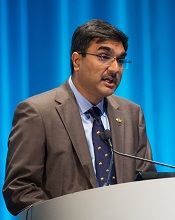
Chanan-Khan, MD
© ASCO/Zach Boyden-Holmes
CHICAGO—Interim results of the phase 3 HELIOS trial suggest that adding ibrutinib to treatment with bendamustine and rituximab (BR) improves outcomes for patients with relapsed chronic lymphocytic leukemia/small lymphocytic lymphoma (CLL/SLL).
Patients who received ibrutinib and BR had significantly higher response rates and a significantly longer progression-free survival than patients who received BR with placebo.
There was no significant difference between the arms with regard to overall survival, but the researchers said these results were confounded by the fact that 31% of patients in the placebo arm crossed over to the ibrutinib arm after they progressed.
“We found that ibrutinib can be safely paired with existing therapy to powerfully prolong remissions and improve patients’ well-being,” said study investigator Asher Alban Akmal Chanan-Khan, MD, of the Mayo Clinic in Jacksonville, Florida.
Dr Chanan-Khan presented these findings at the 2015 ASCO Annual Meeting (abstract LBA7005). The research was funded by Janssen Research & Development, LLC, the company co-developing ibrutinib with Pharmacyclics.
The study included 578 patients with previously treated CLL/SLL, excluding those with del(17p). The patients were randomized to receive 6 cycles of BR plus once-daily ibrutinib (n=289) or 6 cycles of BR plus placebo (n=289). Ibrutinib and placebo were given until disease progression or unacceptable toxicity.
Dr Chanan-Khan said baseline characteristics were comparable between the treatment arms. For each arm, the median number of prior treatments was 2, more than 50% of patients had bulky disease, and about 80% of patients had unmutated IGVH.
“[However,] advanced Rai-stage disease was observed in a slightly [greater] proportion of patients in the control arm versus the ibrutinib arm,” Dr Chanan-Khan noted. “Conversely, a higher proportion of patients with del(11q) was noted in the ibrutinib-containing arm.”
Ultimately, 81.9% (n=235) of patients in the ibrutinib arm and 77.4% (n=222) of those in the placebo arm received their assigned 6 cycles of BR. At the time of analysis, the rate of treatment discontinuation was 29.1% (n=84) in the ibrutinib arm and 64.7% in the placebo arm (n=187).
Those patients who progressed on placebo were allowed to cross over to the ibrutinib arm, and 90 patients had crossed over at the time of the interim analysis.
Response and survival
The study’s primary endpoint was progression-free survival, as assessed by an independent review committee (IRC), in the intent-to-treat population (n=289 in each arm).
At a median follow-up of 17 months, progression-free survival was 13.3 months in the placebo arm and was not reached in the ibrutinib arm (P<0.0001).
“The hazard ratio on this particular survival curve is 0.20, which translates into a reduced risk of progression or death by 80%,” Dr Chanan-Khan said. “This is remarkable. You cannot get a better hazard ratio than this.”
Dr Chanan-Khan also noted that the overall response rate was significantly higher in the ibrutinib arm than the placebo arm. The rates were 82.7% and 67.8%, respectively (P<0.0001), according to the IRC, and 86.2% and 68.9%, respectively (P<0.0001), according to investigator assessment.
The rate of complete response plus complete response with incomplete blood count recovery was 10.4% in the ibrutinib arm and 2.8% in the placebo arm, according to the IRC. According to investigator assessment, the rates were 21.4% and 5.9%, respectively.
The median overall survival was not reached in either arm, and the hazard ratio was 0.628 (P=0.0598).
Adverse events
Dr Chanan-Kahn said the safety profile of the ibrutinib-BR combination was consistent with the safety profiles of each individual drug.
The incidence of adverse events was 70.7% in the ibrutinib-BR arm and 70% in the placebo-BR arm. The most common events were neutropenia (58.2% and 54.7%, respectively), nausea (36.9% vs 35.2%), diarrhea (35.5% vs 23.7%), thrombocytopenia (30.7% vs 24.4%), pyrexia (24.7% vs 22%), anemia (22.6% vs 28.9%), and fatigue (21.6% vs 22.6%).
The incidence of grade 3/4 adverse events was 28.9% in the ibrutinib arm and 25% in the placebo arm. The most common of these were neutropenia (53.7% vs 50.5%) and thrombocytopenia (15% in both arms).
Atrial fibrillation was seen in 7.3% of patients in the ibrutinib arm and 2.8% in the placebo arm. Grade 3/4 atrial fibrillation occurred in 2.8% and 0.7% of patients, respectively. The incidence of tumor lysis syndrome was 3.5% in both arms.
The rate of bleeding was 31% in the ibrutinib arm and 14.6% in the placebo arm. And the rates of major hemorrhage were 3.8% and 1.7%, respectively.
Adverse events were the primary reason for discontinuation in patients who received ibrutinib—14.2%, compared to 11.8% of patients who received placebo. The primary reason for discontinuation in the placebo arm was progressive disease or relapse—45%, compared to 4.8% in the ibrutinib arm.
Taken together, the results of this trial suggest treatment with ibrutinib and BR is superior to standard BR therapy in patients with relapsed CLL/SLL, Dr Chanan-Kahn said.
“This was one of the most rigorous clinical trials ever conducted in CLL,” he said, “and it truly validates ibrutinib as an important drug for this cancer.” ![]()

Chanan-Khan, MD
© ASCO/Zach Boyden-Holmes
CHICAGO—Interim results of the phase 3 HELIOS trial suggest that adding ibrutinib to treatment with bendamustine and rituximab (BR) improves outcomes for patients with relapsed chronic lymphocytic leukemia/small lymphocytic lymphoma (CLL/SLL).
Patients who received ibrutinib and BR had significantly higher response rates and a significantly longer progression-free survival than patients who received BR with placebo.
There was no significant difference between the arms with regard to overall survival, but the researchers said these results were confounded by the fact that 31% of patients in the placebo arm crossed over to the ibrutinib arm after they progressed.
“We found that ibrutinib can be safely paired with existing therapy to powerfully prolong remissions and improve patients’ well-being,” said study investigator Asher Alban Akmal Chanan-Khan, MD, of the Mayo Clinic in Jacksonville, Florida.
Dr Chanan-Khan presented these findings at the 2015 ASCO Annual Meeting (abstract LBA7005). The research was funded by Janssen Research & Development, LLC, the company co-developing ibrutinib with Pharmacyclics.
The study included 578 patients with previously treated CLL/SLL, excluding those with del(17p). The patients were randomized to receive 6 cycles of BR plus once-daily ibrutinib (n=289) or 6 cycles of BR plus placebo (n=289). Ibrutinib and placebo were given until disease progression or unacceptable toxicity.
Dr Chanan-Khan said baseline characteristics were comparable between the treatment arms. For each arm, the median number of prior treatments was 2, more than 50% of patients had bulky disease, and about 80% of patients had unmutated IGVH.
“[However,] advanced Rai-stage disease was observed in a slightly [greater] proportion of patients in the control arm versus the ibrutinib arm,” Dr Chanan-Khan noted. “Conversely, a higher proportion of patients with del(11q) was noted in the ibrutinib-containing arm.”
Ultimately, 81.9% (n=235) of patients in the ibrutinib arm and 77.4% (n=222) of those in the placebo arm received their assigned 6 cycles of BR. At the time of analysis, the rate of treatment discontinuation was 29.1% (n=84) in the ibrutinib arm and 64.7% in the placebo arm (n=187).
Those patients who progressed on placebo were allowed to cross over to the ibrutinib arm, and 90 patients had crossed over at the time of the interim analysis.
Response and survival
The study’s primary endpoint was progression-free survival, as assessed by an independent review committee (IRC), in the intent-to-treat population (n=289 in each arm).
At a median follow-up of 17 months, progression-free survival was 13.3 months in the placebo arm and was not reached in the ibrutinib arm (P<0.0001).
“The hazard ratio on this particular survival curve is 0.20, which translates into a reduced risk of progression or death by 80%,” Dr Chanan-Khan said. “This is remarkable. You cannot get a better hazard ratio than this.”
Dr Chanan-Khan also noted that the overall response rate was significantly higher in the ibrutinib arm than the placebo arm. The rates were 82.7% and 67.8%, respectively (P<0.0001), according to the IRC, and 86.2% and 68.9%, respectively (P<0.0001), according to investigator assessment.
The rate of complete response plus complete response with incomplete blood count recovery was 10.4% in the ibrutinib arm and 2.8% in the placebo arm, according to the IRC. According to investigator assessment, the rates were 21.4% and 5.9%, respectively.
The median overall survival was not reached in either arm, and the hazard ratio was 0.628 (P=0.0598).
Adverse events
Dr Chanan-Kahn said the safety profile of the ibrutinib-BR combination was consistent with the safety profiles of each individual drug.
The incidence of adverse events was 70.7% in the ibrutinib-BR arm and 70% in the placebo-BR arm. The most common events were neutropenia (58.2% and 54.7%, respectively), nausea (36.9% vs 35.2%), diarrhea (35.5% vs 23.7%), thrombocytopenia (30.7% vs 24.4%), pyrexia (24.7% vs 22%), anemia (22.6% vs 28.9%), and fatigue (21.6% vs 22.6%).
The incidence of grade 3/4 adverse events was 28.9% in the ibrutinib arm and 25% in the placebo arm. The most common of these were neutropenia (53.7% vs 50.5%) and thrombocytopenia (15% in both arms).
Atrial fibrillation was seen in 7.3% of patients in the ibrutinib arm and 2.8% in the placebo arm. Grade 3/4 atrial fibrillation occurred in 2.8% and 0.7% of patients, respectively. The incidence of tumor lysis syndrome was 3.5% in both arms.
The rate of bleeding was 31% in the ibrutinib arm and 14.6% in the placebo arm. And the rates of major hemorrhage were 3.8% and 1.7%, respectively.
Adverse events were the primary reason for discontinuation in patients who received ibrutinib—14.2%, compared to 11.8% of patients who received placebo. The primary reason for discontinuation in the placebo arm was progressive disease or relapse—45%, compared to 4.8% in the ibrutinib arm.
Taken together, the results of this trial suggest treatment with ibrutinib and BR is superior to standard BR therapy in patients with relapsed CLL/SLL, Dr Chanan-Kahn said.
“This was one of the most rigorous clinical trials ever conducted in CLL,” he said, “and it truly validates ibrutinib as an important drug for this cancer.” ![]()

Chanan-Khan, MD
© ASCO/Zach Boyden-Holmes
CHICAGO—Interim results of the phase 3 HELIOS trial suggest that adding ibrutinib to treatment with bendamustine and rituximab (BR) improves outcomes for patients with relapsed chronic lymphocytic leukemia/small lymphocytic lymphoma (CLL/SLL).
Patients who received ibrutinib and BR had significantly higher response rates and a significantly longer progression-free survival than patients who received BR with placebo.
There was no significant difference between the arms with regard to overall survival, but the researchers said these results were confounded by the fact that 31% of patients in the placebo arm crossed over to the ibrutinib arm after they progressed.
“We found that ibrutinib can be safely paired with existing therapy to powerfully prolong remissions and improve patients’ well-being,” said study investigator Asher Alban Akmal Chanan-Khan, MD, of the Mayo Clinic in Jacksonville, Florida.
Dr Chanan-Khan presented these findings at the 2015 ASCO Annual Meeting (abstract LBA7005). The research was funded by Janssen Research & Development, LLC, the company co-developing ibrutinib with Pharmacyclics.
The study included 578 patients with previously treated CLL/SLL, excluding those with del(17p). The patients were randomized to receive 6 cycles of BR plus once-daily ibrutinib (n=289) or 6 cycles of BR plus placebo (n=289). Ibrutinib and placebo were given until disease progression or unacceptable toxicity.
Dr Chanan-Khan said baseline characteristics were comparable between the treatment arms. For each arm, the median number of prior treatments was 2, more than 50% of patients had bulky disease, and about 80% of patients had unmutated IGVH.
“[However,] advanced Rai-stage disease was observed in a slightly [greater] proportion of patients in the control arm versus the ibrutinib arm,” Dr Chanan-Khan noted. “Conversely, a higher proportion of patients with del(11q) was noted in the ibrutinib-containing arm.”
Ultimately, 81.9% (n=235) of patients in the ibrutinib arm and 77.4% (n=222) of those in the placebo arm received their assigned 6 cycles of BR. At the time of analysis, the rate of treatment discontinuation was 29.1% (n=84) in the ibrutinib arm and 64.7% in the placebo arm (n=187).
Those patients who progressed on placebo were allowed to cross over to the ibrutinib arm, and 90 patients had crossed over at the time of the interim analysis.
Response and survival
The study’s primary endpoint was progression-free survival, as assessed by an independent review committee (IRC), in the intent-to-treat population (n=289 in each arm).
At a median follow-up of 17 months, progression-free survival was 13.3 months in the placebo arm and was not reached in the ibrutinib arm (P<0.0001).
“The hazard ratio on this particular survival curve is 0.20, which translates into a reduced risk of progression or death by 80%,” Dr Chanan-Khan said. “This is remarkable. You cannot get a better hazard ratio than this.”
Dr Chanan-Khan also noted that the overall response rate was significantly higher in the ibrutinib arm than the placebo arm. The rates were 82.7% and 67.8%, respectively (P<0.0001), according to the IRC, and 86.2% and 68.9%, respectively (P<0.0001), according to investigator assessment.
The rate of complete response plus complete response with incomplete blood count recovery was 10.4% in the ibrutinib arm and 2.8% in the placebo arm, according to the IRC. According to investigator assessment, the rates were 21.4% and 5.9%, respectively.
The median overall survival was not reached in either arm, and the hazard ratio was 0.628 (P=0.0598).
Adverse events
Dr Chanan-Kahn said the safety profile of the ibrutinib-BR combination was consistent with the safety profiles of each individual drug.
The incidence of adverse events was 70.7% in the ibrutinib-BR arm and 70% in the placebo-BR arm. The most common events were neutropenia (58.2% and 54.7%, respectively), nausea (36.9% vs 35.2%), diarrhea (35.5% vs 23.7%), thrombocytopenia (30.7% vs 24.4%), pyrexia (24.7% vs 22%), anemia (22.6% vs 28.9%), and fatigue (21.6% vs 22.6%).
The incidence of grade 3/4 adverse events was 28.9% in the ibrutinib arm and 25% in the placebo arm. The most common of these were neutropenia (53.7% vs 50.5%) and thrombocytopenia (15% in both arms).
Atrial fibrillation was seen in 7.3% of patients in the ibrutinib arm and 2.8% in the placebo arm. Grade 3/4 atrial fibrillation occurred in 2.8% and 0.7% of patients, respectively. The incidence of tumor lysis syndrome was 3.5% in both arms.
The rate of bleeding was 31% in the ibrutinib arm and 14.6% in the placebo arm. And the rates of major hemorrhage were 3.8% and 1.7%, respectively.
Adverse events were the primary reason for discontinuation in patients who received ibrutinib—14.2%, compared to 11.8% of patients who received placebo. The primary reason for discontinuation in the placebo arm was progressive disease or relapse—45%, compared to 4.8% in the ibrutinib arm.
Taken together, the results of this trial suggest treatment with ibrutinib and BR is superior to standard BR therapy in patients with relapsed CLL/SLL, Dr Chanan-Kahn said.
“This was one of the most rigorous clinical trials ever conducted in CLL,” he said, “and it truly validates ibrutinib as an important drug for this cancer.” ![]()
Carotid artery stenosis guidelines need modernizing
VIENNA – Guidelines used around the world for the management of carotid stenosis, both in asymptomatic and symptomatic cases, are often outdated and do not match current evidence, according to the results of a systematic review undertaken by an international group of experts.*
Furthermore, the qualifying statements used to back up the recommendations are often confused and too simplistic, being based only on the degree of randomized data used.
“Other problems were that the guidelines often didn’t even define asymptomatic carotid artery stenosis or symptomatic carotid artery stenosis or they left out procedural standards,” said Dr. Anne Abbott, who presented the findings at the annual European Stroke Conference.
“A number of important discoveries have been made in recent years to better inform treatment decisions for patients with carotid stenosis,” Dr. Abbott, a neurologist at Monash University in Melbourne, Australia, observed.
For instance, based on evidence available today, it is clear that medical therapy alone is best for patients with moderate or severe (50%-99%) asymptomatic disease. Surgery in these patients might actually be harmful, she noted, and it is unknown if or by how much carotid endarterectomy improves stroke prevention versus medical therapy alone.
“We just haven’t done the studies, and this is where we should be concentrating our efforts with respect to randomized, placebo-controlled trials,” Dr. Abbott proposed. “But we do know that the 6% 30-day stroke/death rate [with endarterectomy] is really now too high.”
It’s also now apparent that carotid angioplasty or stenting is more harmful than carotid endarterectomy in asymptomatic patients and “shouldn’t be recommended for routine practice.” Many of the guidelines were still supporting this as an option, she observed, based on the supposed counterbalancing argument that surgical intervention was more likely to increase the risk for heart attacks than stenting. However, the evidence shows that the greatest risk to patients in the periprocedural period is the stroke risk, which is increased by stenting.
Dr. Abbott explained how the team of 16 experts had reviewed all the latest available guidelines for asymptomatic and symptomatic carotid stenosis that they could find from published from January 2008 until January 2015. She noted that guidelines were often difficult to access were often only found because the team knew of their existence through their professional networks.
A total of 34 guidelines from 23 regions or countries in six languages were identified and included in the review. Each of these was independently assessed by two to six of the team, looking at the clinical scenarios covered, the nature of the recommendations made and what evidence was being used to support the recommendations.
Of 28 guidelines that gave recommendations for asymptomatic carotid stenosis, surgery was endorsed for patients at average surgical risk and only one (4%) endorsed medical treatment alone. Eighteen (64%) recommended that stenting be performed or considered, and 24 (86%) supported the use of endarterectomy. “This is despite current evidence that these procedures are now more likely to harm than help patients,” Dr. Abbott said.
“Of major concern I think is that a high proportion, about half, of these guidelines are recommending stenting for high surgical risk asymptomatic patients, she cautioned. “This includes patients with major medical comorbidities – heart failure, respiratory failure – who have a very short life expectancy and are least likely to benefit and are more likely to be at risk from the procedures.”
Somewhat similar findings were seen regarding the use of stenting and surgery in the 33 guidelines that gave recommendations for the management of symptomatic carotid stenosis. Endarterectomy was recommended for average-surgical-risk symptomatic patients by 31 (94%) guidelines and, worryingly, stenting was still being advocated in 19 (58%) guidelines with only nine (27%) saying that stenting should not be used. Stenting was also being endorsed in symptomatic patients at high surgical risk.
Dr. Abbott said that the guidelines were hard to compare because they used a variety of qualifying statements to try to advise on the degree to which a procedure was recommended. There was no consistency or standardization: six guidelines did not use any qualifying statements or were not defined in two guidelines, 10 guidelines used class or grade to denote the strength of the recommendation being made, and 27 guidelines used class, grade, or other means to denote the strength of the evidence the recommendations were being based on.
All this means, however, that there are many opportunities to modernize the guidelines and bring them up-to-date with current knowledge. They shouldn’t be recommending stenting over surgery, for example, and they need to standardize what the recommendations are based on.
“The guidelines should always define their target population properly and that comes straight from randomized trials usually,” Dr. Abbott noted. Procedural standards also need to be given. “Guidelines also need to be consistent throughout, self-contained, and be more accessible.”
Dr. Abbott had no relevant disclosures.
*CORRECTION: 6/21/2015 An error in identification of the stent was corrected.
VIENNA – Guidelines used around the world for the management of carotid stenosis, both in asymptomatic and symptomatic cases, are often outdated and do not match current evidence, according to the results of a systematic review undertaken by an international group of experts.*
Furthermore, the qualifying statements used to back up the recommendations are often confused and too simplistic, being based only on the degree of randomized data used.
“Other problems were that the guidelines often didn’t even define asymptomatic carotid artery stenosis or symptomatic carotid artery stenosis or they left out procedural standards,” said Dr. Anne Abbott, who presented the findings at the annual European Stroke Conference.
“A number of important discoveries have been made in recent years to better inform treatment decisions for patients with carotid stenosis,” Dr. Abbott, a neurologist at Monash University in Melbourne, Australia, observed.
For instance, based on evidence available today, it is clear that medical therapy alone is best for patients with moderate or severe (50%-99%) asymptomatic disease. Surgery in these patients might actually be harmful, she noted, and it is unknown if or by how much carotid endarterectomy improves stroke prevention versus medical therapy alone.
“We just haven’t done the studies, and this is where we should be concentrating our efforts with respect to randomized, placebo-controlled trials,” Dr. Abbott proposed. “But we do know that the 6% 30-day stroke/death rate [with endarterectomy] is really now too high.”
It’s also now apparent that carotid angioplasty or stenting is more harmful than carotid endarterectomy in asymptomatic patients and “shouldn’t be recommended for routine practice.” Many of the guidelines were still supporting this as an option, she observed, based on the supposed counterbalancing argument that surgical intervention was more likely to increase the risk for heart attacks than stenting. However, the evidence shows that the greatest risk to patients in the periprocedural period is the stroke risk, which is increased by stenting.
Dr. Abbott explained how the team of 16 experts had reviewed all the latest available guidelines for asymptomatic and symptomatic carotid stenosis that they could find from published from January 2008 until January 2015. She noted that guidelines were often difficult to access were often only found because the team knew of their existence through their professional networks.
A total of 34 guidelines from 23 regions or countries in six languages were identified and included in the review. Each of these was independently assessed by two to six of the team, looking at the clinical scenarios covered, the nature of the recommendations made and what evidence was being used to support the recommendations.
Of 28 guidelines that gave recommendations for asymptomatic carotid stenosis, surgery was endorsed for patients at average surgical risk and only one (4%) endorsed medical treatment alone. Eighteen (64%) recommended that stenting be performed or considered, and 24 (86%) supported the use of endarterectomy. “This is despite current evidence that these procedures are now more likely to harm than help patients,” Dr. Abbott said.
“Of major concern I think is that a high proportion, about half, of these guidelines are recommending stenting for high surgical risk asymptomatic patients, she cautioned. “This includes patients with major medical comorbidities – heart failure, respiratory failure – who have a very short life expectancy and are least likely to benefit and are more likely to be at risk from the procedures.”
Somewhat similar findings were seen regarding the use of stenting and surgery in the 33 guidelines that gave recommendations for the management of symptomatic carotid stenosis. Endarterectomy was recommended for average-surgical-risk symptomatic patients by 31 (94%) guidelines and, worryingly, stenting was still being advocated in 19 (58%) guidelines with only nine (27%) saying that stenting should not be used. Stenting was also being endorsed in symptomatic patients at high surgical risk.
Dr. Abbott said that the guidelines were hard to compare because they used a variety of qualifying statements to try to advise on the degree to which a procedure was recommended. There was no consistency or standardization: six guidelines did not use any qualifying statements or were not defined in two guidelines, 10 guidelines used class or grade to denote the strength of the recommendation being made, and 27 guidelines used class, grade, or other means to denote the strength of the evidence the recommendations were being based on.
All this means, however, that there are many opportunities to modernize the guidelines and bring them up-to-date with current knowledge. They shouldn’t be recommending stenting over surgery, for example, and they need to standardize what the recommendations are based on.
“The guidelines should always define their target population properly and that comes straight from randomized trials usually,” Dr. Abbott noted. Procedural standards also need to be given. “Guidelines also need to be consistent throughout, self-contained, and be more accessible.”
Dr. Abbott had no relevant disclosures.
*CORRECTION: 6/21/2015 An error in identification of the stent was corrected.
VIENNA – Guidelines used around the world for the management of carotid stenosis, both in asymptomatic and symptomatic cases, are often outdated and do not match current evidence, according to the results of a systematic review undertaken by an international group of experts.*
Furthermore, the qualifying statements used to back up the recommendations are often confused and too simplistic, being based only on the degree of randomized data used.
“Other problems were that the guidelines often didn’t even define asymptomatic carotid artery stenosis or symptomatic carotid artery stenosis or they left out procedural standards,” said Dr. Anne Abbott, who presented the findings at the annual European Stroke Conference.
“A number of important discoveries have been made in recent years to better inform treatment decisions for patients with carotid stenosis,” Dr. Abbott, a neurologist at Monash University in Melbourne, Australia, observed.
For instance, based on evidence available today, it is clear that medical therapy alone is best for patients with moderate or severe (50%-99%) asymptomatic disease. Surgery in these patients might actually be harmful, she noted, and it is unknown if or by how much carotid endarterectomy improves stroke prevention versus medical therapy alone.
“We just haven’t done the studies, and this is where we should be concentrating our efforts with respect to randomized, placebo-controlled trials,” Dr. Abbott proposed. “But we do know that the 6% 30-day stroke/death rate [with endarterectomy] is really now too high.”
It’s also now apparent that carotid angioplasty or stenting is more harmful than carotid endarterectomy in asymptomatic patients and “shouldn’t be recommended for routine practice.” Many of the guidelines were still supporting this as an option, she observed, based on the supposed counterbalancing argument that surgical intervention was more likely to increase the risk for heart attacks than stenting. However, the evidence shows that the greatest risk to patients in the periprocedural period is the stroke risk, which is increased by stenting.
Dr. Abbott explained how the team of 16 experts had reviewed all the latest available guidelines for asymptomatic and symptomatic carotid stenosis that they could find from published from January 2008 until January 2015. She noted that guidelines were often difficult to access were often only found because the team knew of their existence through their professional networks.
A total of 34 guidelines from 23 regions or countries in six languages were identified and included in the review. Each of these was independently assessed by two to six of the team, looking at the clinical scenarios covered, the nature of the recommendations made and what evidence was being used to support the recommendations.
Of 28 guidelines that gave recommendations for asymptomatic carotid stenosis, surgery was endorsed for patients at average surgical risk and only one (4%) endorsed medical treatment alone. Eighteen (64%) recommended that stenting be performed or considered, and 24 (86%) supported the use of endarterectomy. “This is despite current evidence that these procedures are now more likely to harm than help patients,” Dr. Abbott said.
“Of major concern I think is that a high proportion, about half, of these guidelines are recommending stenting for high surgical risk asymptomatic patients, she cautioned. “This includes patients with major medical comorbidities – heart failure, respiratory failure – who have a very short life expectancy and are least likely to benefit and are more likely to be at risk from the procedures.”
Somewhat similar findings were seen regarding the use of stenting and surgery in the 33 guidelines that gave recommendations for the management of symptomatic carotid stenosis. Endarterectomy was recommended for average-surgical-risk symptomatic patients by 31 (94%) guidelines and, worryingly, stenting was still being advocated in 19 (58%) guidelines with only nine (27%) saying that stenting should not be used. Stenting was also being endorsed in symptomatic patients at high surgical risk.
Dr. Abbott said that the guidelines were hard to compare because they used a variety of qualifying statements to try to advise on the degree to which a procedure was recommended. There was no consistency or standardization: six guidelines did not use any qualifying statements or were not defined in two guidelines, 10 guidelines used class or grade to denote the strength of the recommendation being made, and 27 guidelines used class, grade, or other means to denote the strength of the evidence the recommendations were being based on.
All this means, however, that there are many opportunities to modernize the guidelines and bring them up-to-date with current knowledge. They shouldn’t be recommending stenting over surgery, for example, and they need to standardize what the recommendations are based on.
“The guidelines should always define their target population properly and that comes straight from randomized trials usually,” Dr. Abbott noted. Procedural standards also need to be given. “Guidelines also need to be consistent throughout, self-contained, and be more accessible.”
Dr. Abbott had no relevant disclosures.
*CORRECTION: 6/21/2015 An error in identification of the stent was corrected.
AT THE EUROPEAN STROKE CONFERENCE
Key clinical point: Guidelines for carotid stenosis need reviewing and updating in line with modern evidence and practice.
Major finding: Carotid angiography/stenting was recommended for both asymptomatic and symptomatic patients despite current evidence showing that it is more likely to cause harm than provide benefit.
Data source: Systematic review of 33 guidelines for asymptomatic and symptomatic carotid stenosis.
Disclosures: Dr. Abbott had no relevant disclosures.
Paclitaxel balloon achieves unprecedented success in complex PAD
PARIS – A proprietary drug-coated percutaneous angioplasty balloon has achieved unprecedented clinical success in treating long lesions in the superficial femoral arteries.
“The 360-day primary patency rate of 91.1% and clinically driven target lesion revascularization rate of 6% are unmatched for this complex patient subgroup,” Dr. Dierk Scheinert declared in presenting the results of the IN.PACT Global Study Long Lesion Imaging Cohort at the annual congress of the European Association of Percutaneous Cardiovascular Interventions.
The 157 patients who comprise the long lesion cohort are among 1,538 patients with various forms of complex peripheral arterial disease being treated at 64 sites on four continents under the IN.PACT Global Clinical Study, which focuses on the use of Medtronic’s Admiral paclitaxel-coated balloon for percutaneous transluminal angioplasty. Upon balloon inflation, the paclitaxel binds to the vessel wall, penetrating deep into the adventitia in order to interfere with smooth muscle cell proliferation and neointimal hyperplasia. The drug remains in the vessel wall at therapeutic levels for up to 6 months.
The Food and Drug Administration approved the balloon for lesions up to 18 cm in length in native superficial femoral or popliteal arteries. Dr. Scheinert presented a study that sought to broaden that indication: The average lesion length in the 157 participants was 26.4 cm.
The majority of the target lesions, 83%, were de novo, 60% were total occlusions, and 72% featured calcification. These were patients with substantial comorbidities: 41% had diabetes, 88% hypertension, 52% coronary heart disease, 77% dyslipidemia, and 34% were current smokers, noted Dr. Scheinert, professor and chairman of the department of vascular medicine and angiology at the University of Leipzig (Germany).
The mean diameter of the target stenosis was 90% predilatation and 39% afterwards. Provisional stents were implanted in 33% of the 100 patients with lesion lengths of 15-25 cm and 53% in those with lesions longer than 25 cm.
The 12-month primary patency rate, defined as freedom from clinically driven target lesion revascularization and restenosis as determined by a central core lab, varied by lesion length: 97.7% for 15- to 25-cm-long lesions compared with 79.2% for longer ones.
The major adverse event rate – a composite of all-cause mortality, major target limb amputation, clinically driven target vessel revascularization, or thrombosis – was 11.9%.
Of note, the impressive 91.1% primary patency rate at 12 months fell off sharply to 80.7% at 390 days, prompting comment from session cochair Dr. Elazer Edelman.
“I am struck by what happened to these patients at the end of 1 year. Not to detract in any way from the value and importance of what you’ve shown, but the fact that at 1 year we get this precipitous decline is something we as a group ought to be investigating,” said Dr. Edelman, a cardiologist who is professor of health sciences and technology at the Massachusetts Institute of Technology, professor of medicine at Harvard University, and director of the Harvard-MIT Biomedical Engineering Center.
“We have to be a little bit patient,” Dr. Scheinert replied. “We’re going to see some long-term follow-up data beginning this fall. The positive message here is that at 6 months we see almost no events, which is an achievement because typically we already see the first step down in the results curve by then. And we see patency results at 12 months that we haven’t seen with any other therapy so far.”
Dr. Edelman retorted that while it’s clear this innovative therapy has delayed the period of vulnerability to patency loss, “Your work cannot continue to be impactful if we don’t focus on where the loss of patency occurs.”
“When we talk about adjunctive therapy, we need to think now about something innovative. We need to start thinking about how to give drugs from 6 to 12 to 18 months,” he asserted.
Dr. Scheinert is on the scientific advisory board for Medtronic, which funded the study, as well as on advisory boards for more than a dozen other medical companies.
PARIS – A proprietary drug-coated percutaneous angioplasty balloon has achieved unprecedented clinical success in treating long lesions in the superficial femoral arteries.
“The 360-day primary patency rate of 91.1% and clinically driven target lesion revascularization rate of 6% are unmatched for this complex patient subgroup,” Dr. Dierk Scheinert declared in presenting the results of the IN.PACT Global Study Long Lesion Imaging Cohort at the annual congress of the European Association of Percutaneous Cardiovascular Interventions.
The 157 patients who comprise the long lesion cohort are among 1,538 patients with various forms of complex peripheral arterial disease being treated at 64 sites on four continents under the IN.PACT Global Clinical Study, which focuses on the use of Medtronic’s Admiral paclitaxel-coated balloon for percutaneous transluminal angioplasty. Upon balloon inflation, the paclitaxel binds to the vessel wall, penetrating deep into the adventitia in order to interfere with smooth muscle cell proliferation and neointimal hyperplasia. The drug remains in the vessel wall at therapeutic levels for up to 6 months.
The Food and Drug Administration approved the balloon for lesions up to 18 cm in length in native superficial femoral or popliteal arteries. Dr. Scheinert presented a study that sought to broaden that indication: The average lesion length in the 157 participants was 26.4 cm.
The majority of the target lesions, 83%, were de novo, 60% were total occlusions, and 72% featured calcification. These were patients with substantial comorbidities: 41% had diabetes, 88% hypertension, 52% coronary heart disease, 77% dyslipidemia, and 34% were current smokers, noted Dr. Scheinert, professor and chairman of the department of vascular medicine and angiology at the University of Leipzig (Germany).
The mean diameter of the target stenosis was 90% predilatation and 39% afterwards. Provisional stents were implanted in 33% of the 100 patients with lesion lengths of 15-25 cm and 53% in those with lesions longer than 25 cm.
The 12-month primary patency rate, defined as freedom from clinically driven target lesion revascularization and restenosis as determined by a central core lab, varied by lesion length: 97.7% for 15- to 25-cm-long lesions compared with 79.2% for longer ones.
The major adverse event rate – a composite of all-cause mortality, major target limb amputation, clinically driven target vessel revascularization, or thrombosis – was 11.9%.
Of note, the impressive 91.1% primary patency rate at 12 months fell off sharply to 80.7% at 390 days, prompting comment from session cochair Dr. Elazer Edelman.
“I am struck by what happened to these patients at the end of 1 year. Not to detract in any way from the value and importance of what you’ve shown, but the fact that at 1 year we get this precipitous decline is something we as a group ought to be investigating,” said Dr. Edelman, a cardiologist who is professor of health sciences and technology at the Massachusetts Institute of Technology, professor of medicine at Harvard University, and director of the Harvard-MIT Biomedical Engineering Center.
“We have to be a little bit patient,” Dr. Scheinert replied. “We’re going to see some long-term follow-up data beginning this fall. The positive message here is that at 6 months we see almost no events, which is an achievement because typically we already see the first step down in the results curve by then. And we see patency results at 12 months that we haven’t seen with any other therapy so far.”
Dr. Edelman retorted that while it’s clear this innovative therapy has delayed the period of vulnerability to patency loss, “Your work cannot continue to be impactful if we don’t focus on where the loss of patency occurs.”
“When we talk about adjunctive therapy, we need to think now about something innovative. We need to start thinking about how to give drugs from 6 to 12 to 18 months,” he asserted.
Dr. Scheinert is on the scientific advisory board for Medtronic, which funded the study, as well as on advisory boards for more than a dozen other medical companies.
PARIS – A proprietary drug-coated percutaneous angioplasty balloon has achieved unprecedented clinical success in treating long lesions in the superficial femoral arteries.
“The 360-day primary patency rate of 91.1% and clinically driven target lesion revascularization rate of 6% are unmatched for this complex patient subgroup,” Dr. Dierk Scheinert declared in presenting the results of the IN.PACT Global Study Long Lesion Imaging Cohort at the annual congress of the European Association of Percutaneous Cardiovascular Interventions.
The 157 patients who comprise the long lesion cohort are among 1,538 patients with various forms of complex peripheral arterial disease being treated at 64 sites on four continents under the IN.PACT Global Clinical Study, which focuses on the use of Medtronic’s Admiral paclitaxel-coated balloon for percutaneous transluminal angioplasty. Upon balloon inflation, the paclitaxel binds to the vessel wall, penetrating deep into the adventitia in order to interfere with smooth muscle cell proliferation and neointimal hyperplasia. The drug remains in the vessel wall at therapeutic levels for up to 6 months.
The Food and Drug Administration approved the balloon for lesions up to 18 cm in length in native superficial femoral or popliteal arteries. Dr. Scheinert presented a study that sought to broaden that indication: The average lesion length in the 157 participants was 26.4 cm.
The majority of the target lesions, 83%, were de novo, 60% were total occlusions, and 72% featured calcification. These were patients with substantial comorbidities: 41% had diabetes, 88% hypertension, 52% coronary heart disease, 77% dyslipidemia, and 34% were current smokers, noted Dr. Scheinert, professor and chairman of the department of vascular medicine and angiology at the University of Leipzig (Germany).
The mean diameter of the target stenosis was 90% predilatation and 39% afterwards. Provisional stents were implanted in 33% of the 100 patients with lesion lengths of 15-25 cm and 53% in those with lesions longer than 25 cm.
The 12-month primary patency rate, defined as freedom from clinically driven target lesion revascularization and restenosis as determined by a central core lab, varied by lesion length: 97.7% for 15- to 25-cm-long lesions compared with 79.2% for longer ones.
The major adverse event rate – a composite of all-cause mortality, major target limb amputation, clinically driven target vessel revascularization, or thrombosis – was 11.9%.
Of note, the impressive 91.1% primary patency rate at 12 months fell off sharply to 80.7% at 390 days, prompting comment from session cochair Dr. Elazer Edelman.
“I am struck by what happened to these patients at the end of 1 year. Not to detract in any way from the value and importance of what you’ve shown, but the fact that at 1 year we get this precipitous decline is something we as a group ought to be investigating,” said Dr. Edelman, a cardiologist who is professor of health sciences and technology at the Massachusetts Institute of Technology, professor of medicine at Harvard University, and director of the Harvard-MIT Biomedical Engineering Center.
“We have to be a little bit patient,” Dr. Scheinert replied. “We’re going to see some long-term follow-up data beginning this fall. The positive message here is that at 6 months we see almost no events, which is an achievement because typically we already see the first step down in the results curve by then. And we see patency results at 12 months that we haven’t seen with any other therapy so far.”
Dr. Edelman retorted that while it’s clear this innovative therapy has delayed the period of vulnerability to patency loss, “Your work cannot continue to be impactful if we don’t focus on where the loss of patency occurs.”
“When we talk about adjunctive therapy, we need to think now about something innovative. We need to start thinking about how to give drugs from 6 to 12 to 18 months,” he asserted.
Dr. Scheinert is on the scientific advisory board for Medtronic, which funded the study, as well as on advisory boards for more than a dozen other medical companies.
AT EuroPCR
Key clinical point: A paclitaxel-coated angioplasty balloon results in 12-month patency rates never before seen in patients with peripheral arterial disease involving long lesions in the superficial femoral arteries.
Major finding: The 12-month primary patency rate was 91.1% in patients whose average lesion length was 26.4 cm.
Data source: This prospective, multinational study included 157 subjects with complex superficial femoral artery lesions at least 15 cm in length.
Disclosures: The IN.PACT Global Study is funded by Medtronic. The presenter is on the company’s scientific advisory board.
APA: DSM-5 leaves one-third of soldiers with subthreshold PTSD in limbo, expert says
TORONTO – The most effective ways to diagnose and treat posttraumatic stress disorder in military populations is at issue after the results of a recent study showed that a third of soldiers who previously would have qualified for the diagnosis do not under updated criteria. The matter is far from settled, however, and continues to be a matter of debate.
Data from a randomized, controlled study published last year (Lancet Psychiatry 2014;1:269-77)* and presented at the annual meeting of the American Psychiatric Association indicate that about a third of soldiers who would have received a clinical diagnosis of PTSD under the DSM-IV criteria do not meet the standard under the DSM-5, released in 2013.
The DSM-5 definition added criteria denoting a person’s efforts to avoid any person, place, or thing that causes them to remember details or feelings experienced during a specific traumatic event. According to former Army psychiatrist Col. (Ret.) Charles W. Hoge, this kind of emotional suppression is exactly what military, law enforcement, and first responder personnel are trained to do in order to accomplish their duties. Indeed, his study indicated that most of the soldiers who did not meet the clinical threshold for PTSD failed criterion C, the section that addresses avoidance.
“The reason to change a definition is to improve clinical utility or improve specificity, but what we’ve done is just shifted the deck chairs,” said Dr. Hoge during his presentation at the meeting.
Not so, said Dr. Matthew J. Friedman, who served on the DSM-5 Work Group that addressed PTSD, and recently retired as executive director of the Veterans Affairs’ National Center for PTSD. In an interview, Dr. Friedman disagreed with framing the findings in terms of clinical utility, particularly if the diagnostic criteria are seen as “easily and reliably utilized by different clinicians.” In that case, Dr. Friedman said in the DSM-5 field trials conducted prior to the manual’s release, the proposed PTSD criteria proved to be among the “best.”
Rather than view the findings merely as a shuffling of seats, Dr. Friedman suggested the findings could lead to a deeper line of inquiry around whether there is in fact a response bias in military personnel who might be less likely to “endorse avoidance symptoms. If the study had been done by a structured interview with a trained clinician instead of by self-report, would the results have looked the same?”
In addition to increasing the number of criteria for PTSD from 17 to 20 symptoms, including the avoidant criteria, the DSM-5 reworded 8 symptoms, and further specified symptom clusters from three groups to four, with the addition of alterations in cognitions and mood to the third cluster, and alterations in arousal and reactivity becoming the fourth. The DSM-5 also reclassified the disorder from one of anxiety to one of trauma and stress.
Dr. Hoge, currently a researcher at the Center for Psychiatry and Neuroscience at Walter Reed Army Institute of Research in Silver Spring, Md., and his colleagues conducted a head-to-head comparison of the number of PTSD diagnoses obtained according to criteria in either the DSM-IV or the DSM-5. They surveyed 1,822 infantry soldiers for a single brigade combat team, more than half of whom had been deployed to Iraq or Afghanistan. Each survey included items from both the DSM-IV’s PTSD Check List, specific for “stressful experiences,” as well as the PCL-5 from the DSM-5. The questions from each were separated in the same survey by several other health-related items. Two versions of the survey were created and distributed randomly across the cohort; one version of the study listed the DSM-IV PCL-S questions first, the other survey had the PCL-5 version first.
The demographic and health outcomes in each group were essentially identical: Respondents were almost entirely male, aged 18-25 years, and roughly half of each group was married. Nearly one-fifth of each group was found by the survey to have moderate to severe general anxiety disorder.
The prevalence rates of PTSD in both survey groups were nearly identical: 12.9% vs. 12.2%, respectively; however, 30% of those surveyed who previously would have met the criteria for PTSD in the DSM-IV did not meet the DSM-5 criteria. Meanwhile, 28% of those who met DSM-5 criteria would not have met the DSM-IV criteria.
Dr. Friedman said the method used in Dr. Hoge’s study did not specifically explore the effect of the A criteria that identify the level of actual exposure to a traumatic event and a person’s immediate reaction to it. The DSM-IV stipulated in criterion A2 that a person experience “fear, helplessness, or horror” directly after a traumatic event. “One of the things that we found is that many soldiers who have all of the PTSD symptoms were ineligible for a PTSD diagnosis because they did not meet the A2 criterion.”
Dr. Friedman did not say whether this necessarily was the result of one’s crisis response training but noted that based on an evidence review, his work group dropped the criterion, and that now many people previously considered subclinical receive a PTSD diagnosis. “Had the A criteria been included in [Dr. Hoge’s] exploration, then a soldier who would not have met the A criteria in DSM-VI would make it in DSM-5, so it becomes a different ball game,” said Dr. Friedman, senior adviser at the National Center for PTSD, and professor of psychiatry and of pharmacology and toxicology at the Geisel School of Medicine at Dartmouth, Hanover, N.H.
In the study, Dr. Hoge and his coauthors wrote, “there is good evidence lending support to removal of the criterion A2,” yet during his presentation, he emphasized that just as service members learn to override fear, hopelessness, or horror, “they also learn to override avoidance symptoms as part of their training.” He concluded that because the prevalence rates are virtually the same between the fourth and fifth editions of the DSM, but for different reasons, there is no clinical utility in the new criteria. “Technically, [these soldiers] don’t meet the new definition, but clearly, they are individuals who need trauma-focused therapy and would have met the previous definition.”
Former Army psychiatrist Col. (Ret.) Elspeth Cameron Ritchie, meanwhile, said in an interview that Dr. Hoge and Dr. Friedman are “both world-renowned researchers in the field of PTSD and other related injuries of war.”
“All of us are struggling with the right way to diagnose PTSD, especially after almost 14 years of war and hundreds of thousands of wounded service members,” Dr. Ritchie said. “In addition, PTSD is not a simple, uniform diagnosis. It probably is many overlapping diagnoses.”
She has warned clinicians to proceed with caution, since how military personnel are diagnosed can have serious implications for their careers and benefits.
Currently, the VA and the Department of Defense support the status quo for any personnel previously diagnosed according to DSM-IV criteria, but how subclinical cases should be handled is still at issue. The DSM-5 recommendation for subthreshold symptoms is to consider them an adjustment disorder.
Dr. Hoge rejected this as unhelpful, noting that a failure to adjust or adapt in the military setting has a “pejorative connotation.”
Dr. Friedman and the National Center for PTSD currently recommend using 308.89 from the DSM-5, which is “other specified trauma and stressor-related disorder.” Using “chronic adjustment disorder” is not appropriate, said Dr. Friedman, “because it has a 6-month time limit.” Dr. Friedman also noted that 308.89 in the DSM-5 is the same as the DSM-IV anxiety not otherwise specified, which prior to the DSM-5 was what was used for subthreshold PTSD. According to Dr. Hoge, however, 308.89 is linked in military electronic health records to “adjustment reaction with aggression antisocial behavior/destructiveness” and “aggressor identified syndrome,” both of which could have similar deleterious effects to a soldier as an “adjustment disorder.”
The current U.S. Army Medical Command policy allows physicians to continue diagnosing PTSD according to DSM-IV standards or to apply an unspecified anxiety code (ICD-9 300.00) for any subthreshold PTSD patients.
The fractious approach to diagnosis, according to Dr. Hoge, might be simplified by implementation later this year of the ICD-10, although he said early indications of the ICD-11 in Europe do not show better specificity when compared with the DSM-IV. He noted that the ICD-11 is simpler and has fewer symptom criteria. Here in the United States, he said, “We are not going in the right direction.”
Dr. Hoge said his presentation was based on his own findings and does not represent the opinions or policies of the U.S. Army.
On Twitter @whitneymcknight
*Correction, 6/2/2014: An earlier version of this article misattributed a reference to Lancet Psychiatry.
TORONTO – The most effective ways to diagnose and treat posttraumatic stress disorder in military populations is at issue after the results of a recent study showed that a third of soldiers who previously would have qualified for the diagnosis do not under updated criteria. The matter is far from settled, however, and continues to be a matter of debate.
Data from a randomized, controlled study published last year (Lancet Psychiatry 2014;1:269-77)* and presented at the annual meeting of the American Psychiatric Association indicate that about a third of soldiers who would have received a clinical diagnosis of PTSD under the DSM-IV criteria do not meet the standard under the DSM-5, released in 2013.
The DSM-5 definition added criteria denoting a person’s efforts to avoid any person, place, or thing that causes them to remember details or feelings experienced during a specific traumatic event. According to former Army psychiatrist Col. (Ret.) Charles W. Hoge, this kind of emotional suppression is exactly what military, law enforcement, and first responder personnel are trained to do in order to accomplish their duties. Indeed, his study indicated that most of the soldiers who did not meet the clinical threshold for PTSD failed criterion C, the section that addresses avoidance.
“The reason to change a definition is to improve clinical utility or improve specificity, but what we’ve done is just shifted the deck chairs,” said Dr. Hoge during his presentation at the meeting.
Not so, said Dr. Matthew J. Friedman, who served on the DSM-5 Work Group that addressed PTSD, and recently retired as executive director of the Veterans Affairs’ National Center for PTSD. In an interview, Dr. Friedman disagreed with framing the findings in terms of clinical utility, particularly if the diagnostic criteria are seen as “easily and reliably utilized by different clinicians.” In that case, Dr. Friedman said in the DSM-5 field trials conducted prior to the manual’s release, the proposed PTSD criteria proved to be among the “best.”
Rather than view the findings merely as a shuffling of seats, Dr. Friedman suggested the findings could lead to a deeper line of inquiry around whether there is in fact a response bias in military personnel who might be less likely to “endorse avoidance symptoms. If the study had been done by a structured interview with a trained clinician instead of by self-report, would the results have looked the same?”
In addition to increasing the number of criteria for PTSD from 17 to 20 symptoms, including the avoidant criteria, the DSM-5 reworded 8 symptoms, and further specified symptom clusters from three groups to four, with the addition of alterations in cognitions and mood to the third cluster, and alterations in arousal and reactivity becoming the fourth. The DSM-5 also reclassified the disorder from one of anxiety to one of trauma and stress.
Dr. Hoge, currently a researcher at the Center for Psychiatry and Neuroscience at Walter Reed Army Institute of Research in Silver Spring, Md., and his colleagues conducted a head-to-head comparison of the number of PTSD diagnoses obtained according to criteria in either the DSM-IV or the DSM-5. They surveyed 1,822 infantry soldiers for a single brigade combat team, more than half of whom had been deployed to Iraq or Afghanistan. Each survey included items from both the DSM-IV’s PTSD Check List, specific for “stressful experiences,” as well as the PCL-5 from the DSM-5. The questions from each were separated in the same survey by several other health-related items. Two versions of the survey were created and distributed randomly across the cohort; one version of the study listed the DSM-IV PCL-S questions first, the other survey had the PCL-5 version first.
The demographic and health outcomes in each group were essentially identical: Respondents were almost entirely male, aged 18-25 years, and roughly half of each group was married. Nearly one-fifth of each group was found by the survey to have moderate to severe general anxiety disorder.
The prevalence rates of PTSD in both survey groups were nearly identical: 12.9% vs. 12.2%, respectively; however, 30% of those surveyed who previously would have met the criteria for PTSD in the DSM-IV did not meet the DSM-5 criteria. Meanwhile, 28% of those who met DSM-5 criteria would not have met the DSM-IV criteria.
Dr. Friedman said the method used in Dr. Hoge’s study did not specifically explore the effect of the A criteria that identify the level of actual exposure to a traumatic event and a person’s immediate reaction to it. The DSM-IV stipulated in criterion A2 that a person experience “fear, helplessness, or horror” directly after a traumatic event. “One of the things that we found is that many soldiers who have all of the PTSD symptoms were ineligible for a PTSD diagnosis because they did not meet the A2 criterion.”
Dr. Friedman did not say whether this necessarily was the result of one’s crisis response training but noted that based on an evidence review, his work group dropped the criterion, and that now many people previously considered subclinical receive a PTSD diagnosis. “Had the A criteria been included in [Dr. Hoge’s] exploration, then a soldier who would not have met the A criteria in DSM-VI would make it in DSM-5, so it becomes a different ball game,” said Dr. Friedman, senior adviser at the National Center for PTSD, and professor of psychiatry and of pharmacology and toxicology at the Geisel School of Medicine at Dartmouth, Hanover, N.H.
In the study, Dr. Hoge and his coauthors wrote, “there is good evidence lending support to removal of the criterion A2,” yet during his presentation, he emphasized that just as service members learn to override fear, hopelessness, or horror, “they also learn to override avoidance symptoms as part of their training.” He concluded that because the prevalence rates are virtually the same between the fourth and fifth editions of the DSM, but for different reasons, there is no clinical utility in the new criteria. “Technically, [these soldiers] don’t meet the new definition, but clearly, they are individuals who need trauma-focused therapy and would have met the previous definition.”
Former Army psychiatrist Col. (Ret.) Elspeth Cameron Ritchie, meanwhile, said in an interview that Dr. Hoge and Dr. Friedman are “both world-renowned researchers in the field of PTSD and other related injuries of war.”
“All of us are struggling with the right way to diagnose PTSD, especially after almost 14 years of war and hundreds of thousands of wounded service members,” Dr. Ritchie said. “In addition, PTSD is not a simple, uniform diagnosis. It probably is many overlapping diagnoses.”
She has warned clinicians to proceed with caution, since how military personnel are diagnosed can have serious implications for their careers and benefits.
Currently, the VA and the Department of Defense support the status quo for any personnel previously diagnosed according to DSM-IV criteria, but how subclinical cases should be handled is still at issue. The DSM-5 recommendation for subthreshold symptoms is to consider them an adjustment disorder.
Dr. Hoge rejected this as unhelpful, noting that a failure to adjust or adapt in the military setting has a “pejorative connotation.”
Dr. Friedman and the National Center for PTSD currently recommend using 308.89 from the DSM-5, which is “other specified trauma and stressor-related disorder.” Using “chronic adjustment disorder” is not appropriate, said Dr. Friedman, “because it has a 6-month time limit.” Dr. Friedman also noted that 308.89 in the DSM-5 is the same as the DSM-IV anxiety not otherwise specified, which prior to the DSM-5 was what was used for subthreshold PTSD. According to Dr. Hoge, however, 308.89 is linked in military electronic health records to “adjustment reaction with aggression antisocial behavior/destructiveness” and “aggressor identified syndrome,” both of which could have similar deleterious effects to a soldier as an “adjustment disorder.”
The current U.S. Army Medical Command policy allows physicians to continue diagnosing PTSD according to DSM-IV standards or to apply an unspecified anxiety code (ICD-9 300.00) for any subthreshold PTSD patients.
The fractious approach to diagnosis, according to Dr. Hoge, might be simplified by implementation later this year of the ICD-10, although he said early indications of the ICD-11 in Europe do not show better specificity when compared with the DSM-IV. He noted that the ICD-11 is simpler and has fewer symptom criteria. Here in the United States, he said, “We are not going in the right direction.”
Dr. Hoge said his presentation was based on his own findings and does not represent the opinions or policies of the U.S. Army.
On Twitter @whitneymcknight
*Correction, 6/2/2014: An earlier version of this article misattributed a reference to Lancet Psychiatry.
TORONTO – The most effective ways to diagnose and treat posttraumatic stress disorder in military populations is at issue after the results of a recent study showed that a third of soldiers who previously would have qualified for the diagnosis do not under updated criteria. The matter is far from settled, however, and continues to be a matter of debate.
Data from a randomized, controlled study published last year (Lancet Psychiatry 2014;1:269-77)* and presented at the annual meeting of the American Psychiatric Association indicate that about a third of soldiers who would have received a clinical diagnosis of PTSD under the DSM-IV criteria do not meet the standard under the DSM-5, released in 2013.
The DSM-5 definition added criteria denoting a person’s efforts to avoid any person, place, or thing that causes them to remember details or feelings experienced during a specific traumatic event. According to former Army psychiatrist Col. (Ret.) Charles W. Hoge, this kind of emotional suppression is exactly what military, law enforcement, and first responder personnel are trained to do in order to accomplish their duties. Indeed, his study indicated that most of the soldiers who did not meet the clinical threshold for PTSD failed criterion C, the section that addresses avoidance.
“The reason to change a definition is to improve clinical utility or improve specificity, but what we’ve done is just shifted the deck chairs,” said Dr. Hoge during his presentation at the meeting.
Not so, said Dr. Matthew J. Friedman, who served on the DSM-5 Work Group that addressed PTSD, and recently retired as executive director of the Veterans Affairs’ National Center for PTSD. In an interview, Dr. Friedman disagreed with framing the findings in terms of clinical utility, particularly if the diagnostic criteria are seen as “easily and reliably utilized by different clinicians.” In that case, Dr. Friedman said in the DSM-5 field trials conducted prior to the manual’s release, the proposed PTSD criteria proved to be among the “best.”
Rather than view the findings merely as a shuffling of seats, Dr. Friedman suggested the findings could lead to a deeper line of inquiry around whether there is in fact a response bias in military personnel who might be less likely to “endorse avoidance symptoms. If the study had been done by a structured interview with a trained clinician instead of by self-report, would the results have looked the same?”
In addition to increasing the number of criteria for PTSD from 17 to 20 symptoms, including the avoidant criteria, the DSM-5 reworded 8 symptoms, and further specified symptom clusters from three groups to four, with the addition of alterations in cognitions and mood to the third cluster, and alterations in arousal and reactivity becoming the fourth. The DSM-5 also reclassified the disorder from one of anxiety to one of trauma and stress.
Dr. Hoge, currently a researcher at the Center for Psychiatry and Neuroscience at Walter Reed Army Institute of Research in Silver Spring, Md., and his colleagues conducted a head-to-head comparison of the number of PTSD diagnoses obtained according to criteria in either the DSM-IV or the DSM-5. They surveyed 1,822 infantry soldiers for a single brigade combat team, more than half of whom had been deployed to Iraq or Afghanistan. Each survey included items from both the DSM-IV’s PTSD Check List, specific for “stressful experiences,” as well as the PCL-5 from the DSM-5. The questions from each were separated in the same survey by several other health-related items. Two versions of the survey were created and distributed randomly across the cohort; one version of the study listed the DSM-IV PCL-S questions first, the other survey had the PCL-5 version first.
The demographic and health outcomes in each group were essentially identical: Respondents were almost entirely male, aged 18-25 years, and roughly half of each group was married. Nearly one-fifth of each group was found by the survey to have moderate to severe general anxiety disorder.
The prevalence rates of PTSD in both survey groups were nearly identical: 12.9% vs. 12.2%, respectively; however, 30% of those surveyed who previously would have met the criteria for PTSD in the DSM-IV did not meet the DSM-5 criteria. Meanwhile, 28% of those who met DSM-5 criteria would not have met the DSM-IV criteria.
Dr. Friedman said the method used in Dr. Hoge’s study did not specifically explore the effect of the A criteria that identify the level of actual exposure to a traumatic event and a person’s immediate reaction to it. The DSM-IV stipulated in criterion A2 that a person experience “fear, helplessness, or horror” directly after a traumatic event. “One of the things that we found is that many soldiers who have all of the PTSD symptoms were ineligible for a PTSD diagnosis because they did not meet the A2 criterion.”
Dr. Friedman did not say whether this necessarily was the result of one’s crisis response training but noted that based on an evidence review, his work group dropped the criterion, and that now many people previously considered subclinical receive a PTSD diagnosis. “Had the A criteria been included in [Dr. Hoge’s] exploration, then a soldier who would not have met the A criteria in DSM-VI would make it in DSM-5, so it becomes a different ball game,” said Dr. Friedman, senior adviser at the National Center for PTSD, and professor of psychiatry and of pharmacology and toxicology at the Geisel School of Medicine at Dartmouth, Hanover, N.H.
In the study, Dr. Hoge and his coauthors wrote, “there is good evidence lending support to removal of the criterion A2,” yet during his presentation, he emphasized that just as service members learn to override fear, hopelessness, or horror, “they also learn to override avoidance symptoms as part of their training.” He concluded that because the prevalence rates are virtually the same between the fourth and fifth editions of the DSM, but for different reasons, there is no clinical utility in the new criteria. “Technically, [these soldiers] don’t meet the new definition, but clearly, they are individuals who need trauma-focused therapy and would have met the previous definition.”
Former Army psychiatrist Col. (Ret.) Elspeth Cameron Ritchie, meanwhile, said in an interview that Dr. Hoge and Dr. Friedman are “both world-renowned researchers in the field of PTSD and other related injuries of war.”
“All of us are struggling with the right way to diagnose PTSD, especially after almost 14 years of war and hundreds of thousands of wounded service members,” Dr. Ritchie said. “In addition, PTSD is not a simple, uniform diagnosis. It probably is many overlapping diagnoses.”
She has warned clinicians to proceed with caution, since how military personnel are diagnosed can have serious implications for their careers and benefits.
Currently, the VA and the Department of Defense support the status quo for any personnel previously diagnosed according to DSM-IV criteria, but how subclinical cases should be handled is still at issue. The DSM-5 recommendation for subthreshold symptoms is to consider them an adjustment disorder.
Dr. Hoge rejected this as unhelpful, noting that a failure to adjust or adapt in the military setting has a “pejorative connotation.”
Dr. Friedman and the National Center for PTSD currently recommend using 308.89 from the DSM-5, which is “other specified trauma and stressor-related disorder.” Using “chronic adjustment disorder” is not appropriate, said Dr. Friedman, “because it has a 6-month time limit.” Dr. Friedman also noted that 308.89 in the DSM-5 is the same as the DSM-IV anxiety not otherwise specified, which prior to the DSM-5 was what was used for subthreshold PTSD. According to Dr. Hoge, however, 308.89 is linked in military electronic health records to “adjustment reaction with aggression antisocial behavior/destructiveness” and “aggressor identified syndrome,” both of which could have similar deleterious effects to a soldier as an “adjustment disorder.”
The current U.S. Army Medical Command policy allows physicians to continue diagnosing PTSD according to DSM-IV standards or to apply an unspecified anxiety code (ICD-9 300.00) for any subthreshold PTSD patients.
The fractious approach to diagnosis, according to Dr. Hoge, might be simplified by implementation later this year of the ICD-10, although he said early indications of the ICD-11 in Europe do not show better specificity when compared with the DSM-IV. He noted that the ICD-11 is simpler and has fewer symptom criteria. Here in the United States, he said, “We are not going in the right direction.”
Dr. Hoge said his presentation was based on his own findings and does not represent the opinions or policies of the U.S. Army.
On Twitter @whitneymcknight
*Correction, 6/2/2014: An earlier version of this article misattributed a reference to Lancet Psychiatry.
AT THE APA ANNUAL MEETING
Key clinical point: The DSM-5 definition of posttraumatic stress disorder disqualifies a third of soldiers who once qualified for the diagnosis.
Major finding: Thirty percent of soldiers who previously would have met the criteria for PTSD in the DSM-IV did not meet the DSM-5 criteria.
Data source: Randomized, controlled study of 1,822 infantry soldiers for a single brigade combat team, half of whom had been deployed in war zones.
Disclosures: Dr. Hoge said his presentation was based on his own findings and does not represent the opinions or policies of the U.S. Army.














